So it doesn’t take a member of the Brain Trust to know that I’m not much a fan of deserts. I say this from both a pragmatic standpoint (wind-blown dust is a major, major problem I’ve had to work around on this trip) and from a philosophical standpoint, in that a still lake in a cool summer sunrise with all your friends and family gently waking to the dawn’s glow in the cottage a few blocks up the hill from the boathouse is the closest we have on Earth to the Platonic idea of heaven (#Ocean fans, don’t @ me, #GreatLakesBestTakes).
Buuuut the desert is more or less unavoidable when you’re cruising southbound I-15 on your way out of Utah and towards Las Vegas:
Shhhh yes I know this is in California, just pretend that this is in southeast Nevada for the purpose of storytelling. This is what we in the travelogue business call a “lie.”
I did try to make the most of it, I really did! But because of my predilections, all of the cool things I found in the desert just happen to focus around water ¯\_(ツ)_/¯. Case in point:
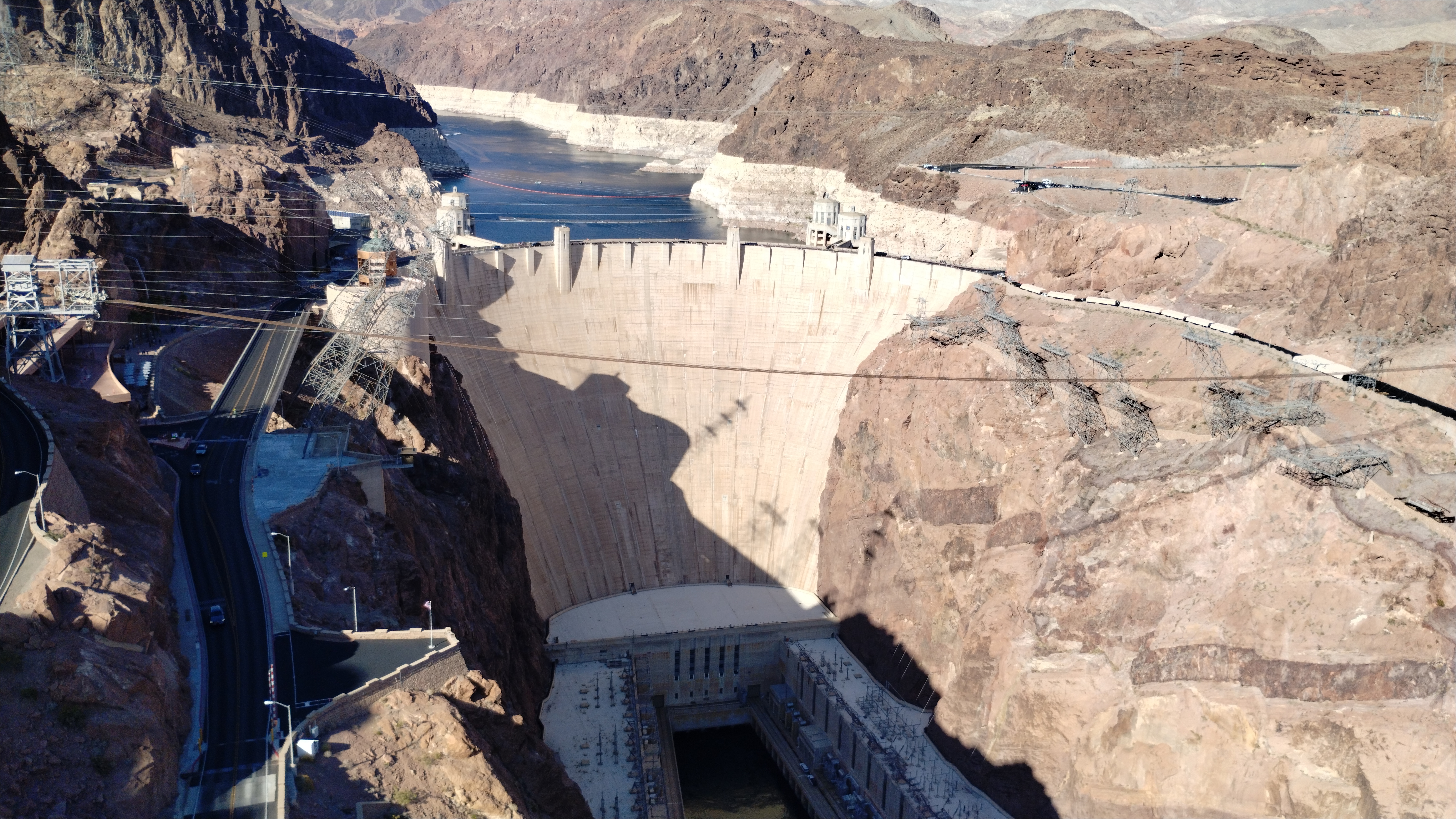
Just as the pursuit of Godliness requires Zeno’s stroll back towards Eden, the attempt to build Heaven on Earth requires the creation of artificial lakes, the closest some of these western states can get to paradise.
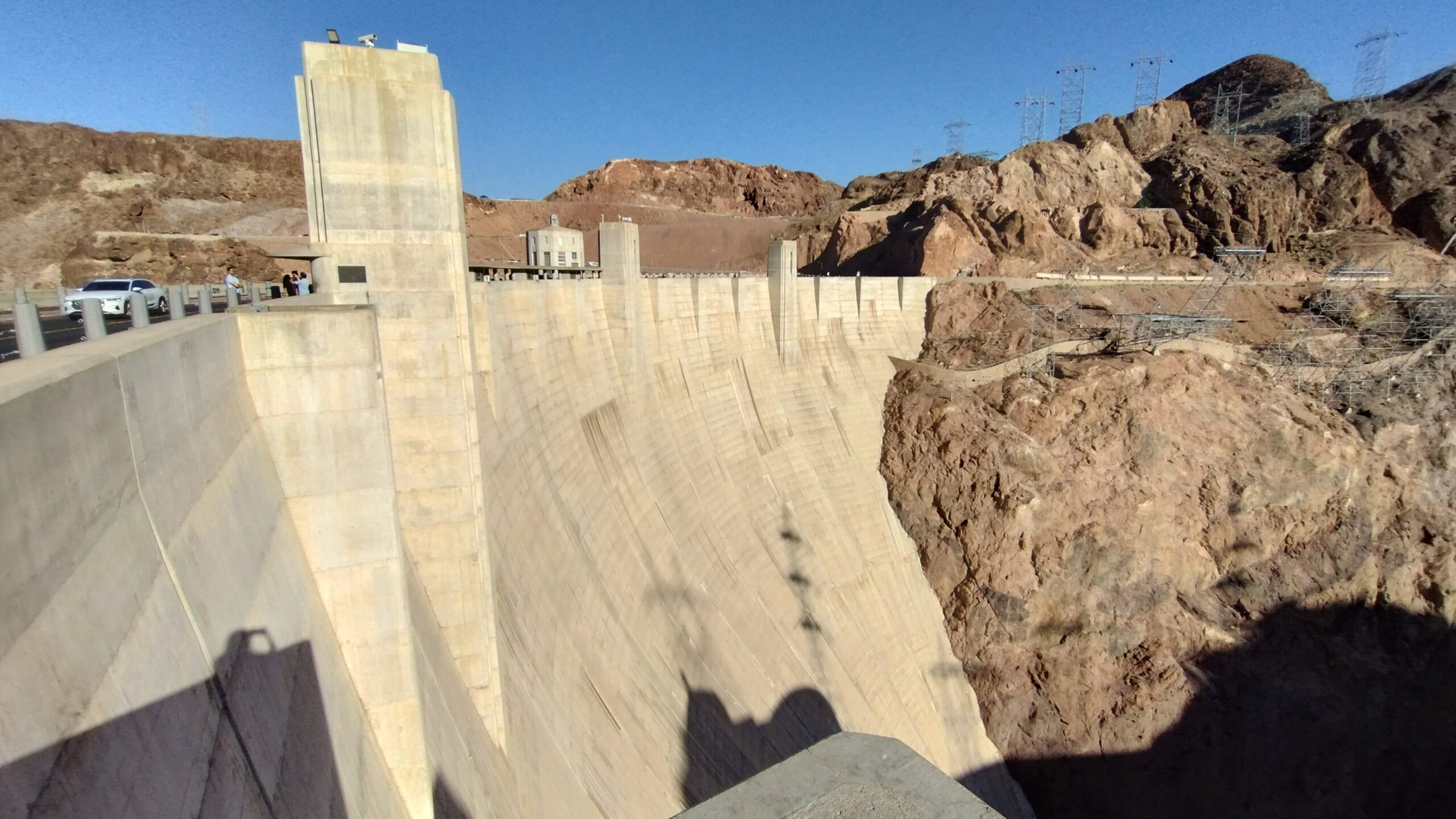
Philosophy aside, did you know that they still let you drive on the road atop the Hoover Dam? Yeah, it’s behind a security checkpoint and the road only goes to a parking lot on the other side, but you can still drive your car on that road across the dam!
Legitimately, after hearing so much in the news about the receding Lake Mead, I did want to see it in person. It’s strange to me that something so permanent and imposing as the Hoover Dam could create something now seen as ephemeral (Lake Mead, in its dwindling size), but stange in a beautiful way:
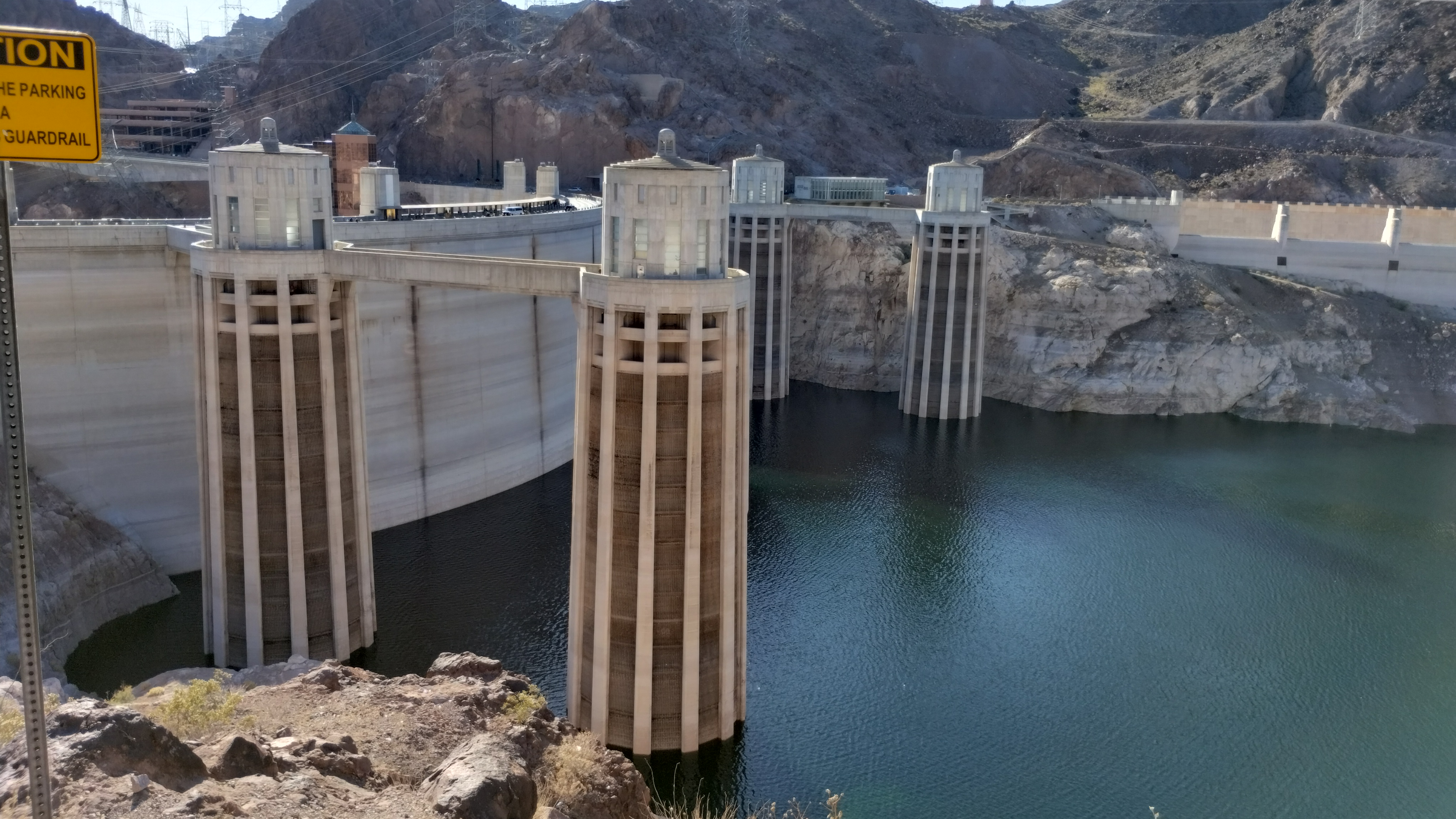
They weren’t lying about the decline in lake levels. These towers, the intake towers for the hydroelectric plant, should really be submerged up to the second ring below the access platforms. Additionally, the spring snowmelt in the upper part of the basin has yet to reach Lake Mead, so this really is the lowest the water has been at the dam since its first filling in the 30s.
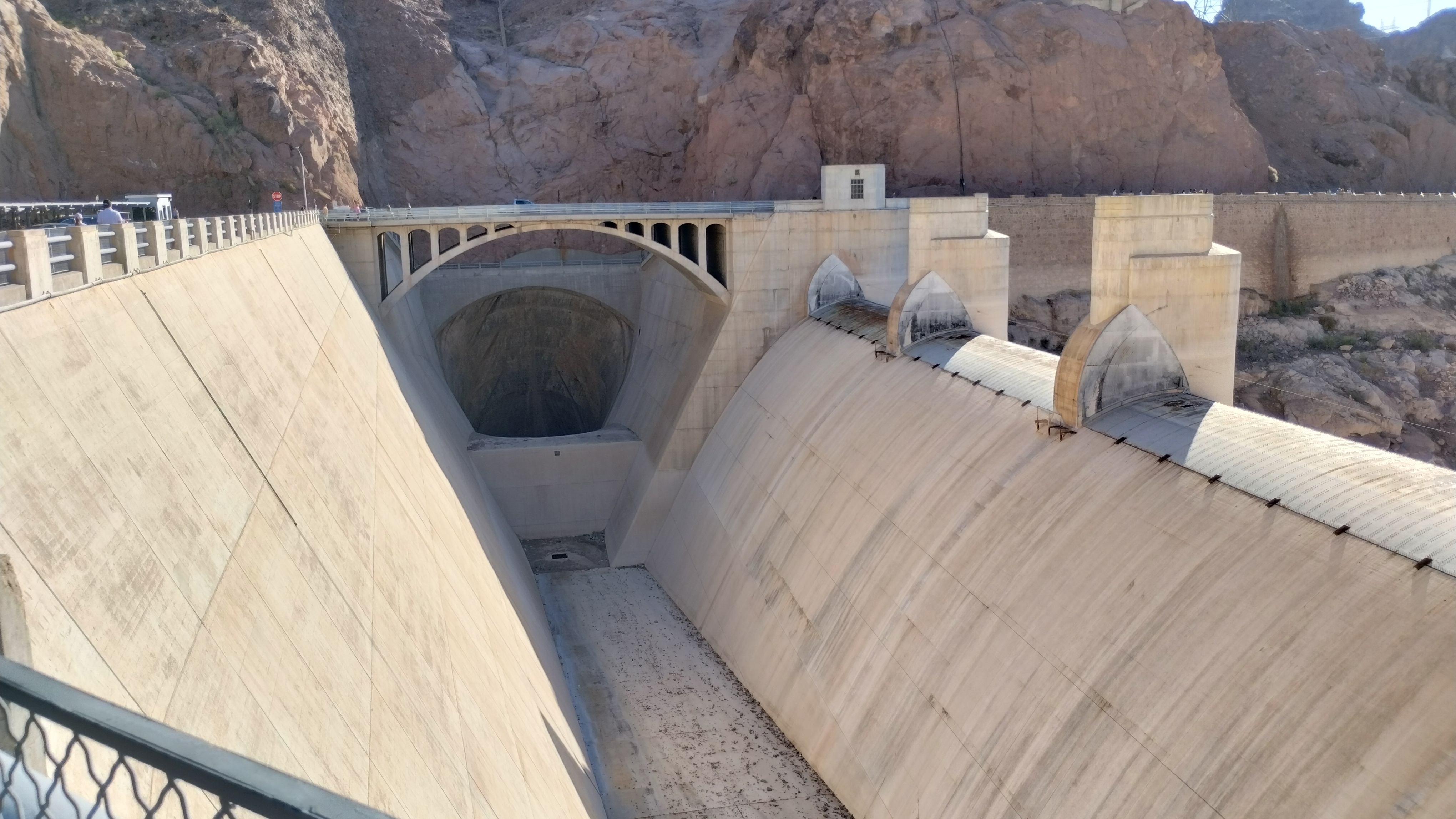
I also found the two spillways of the damn quite compelling (this is the one on the Arizona side of the river). As a placard noted, each spillway can handle the inflow of two Niagara Falls (pronounced NYE-AH-GA-RAH FALLS, SLOWLY I TURNED, STEP-BY-STEP by my Mom and me and nobody else), but they have only been used once in the entire life of the dam, in the mid-80s. What an odd and ephemeral thing to exist in the desert! Spillways sized for Niagara and only once used:
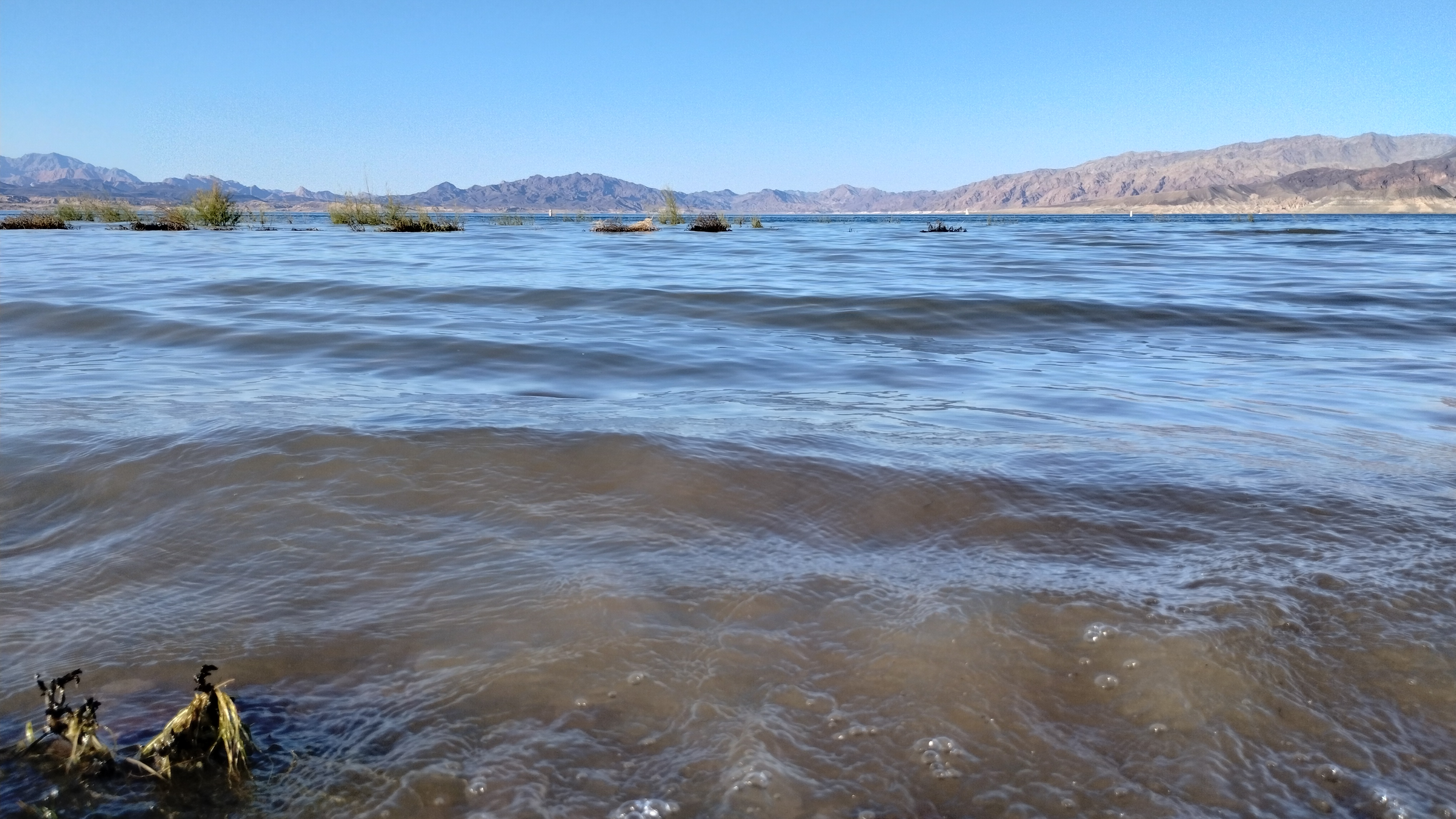
Lake Mead itself is rather scuzzy and gross, at least within the national recreation area I saw it at. But hey, Nevada has barely any other lakes to itself, so I applaud this first try!
I ended that day in Pahrump, Nevada, intending to keep moving west and avoid Sin City if I could help it (hotels and AirBnBs both were very expensive there too, it being Memorial Day weekend). But unfortunately, a check engine light came on as I was driving into town (it ended up being nothing to worry about), so I had to adjust my plans somewhat to add an extra day to my desert travels. No worries, I had more desert oddities I wanted to see anyhow!
And here behold, one of the most unusual and precious sites I have wanted to see on this entire trip:
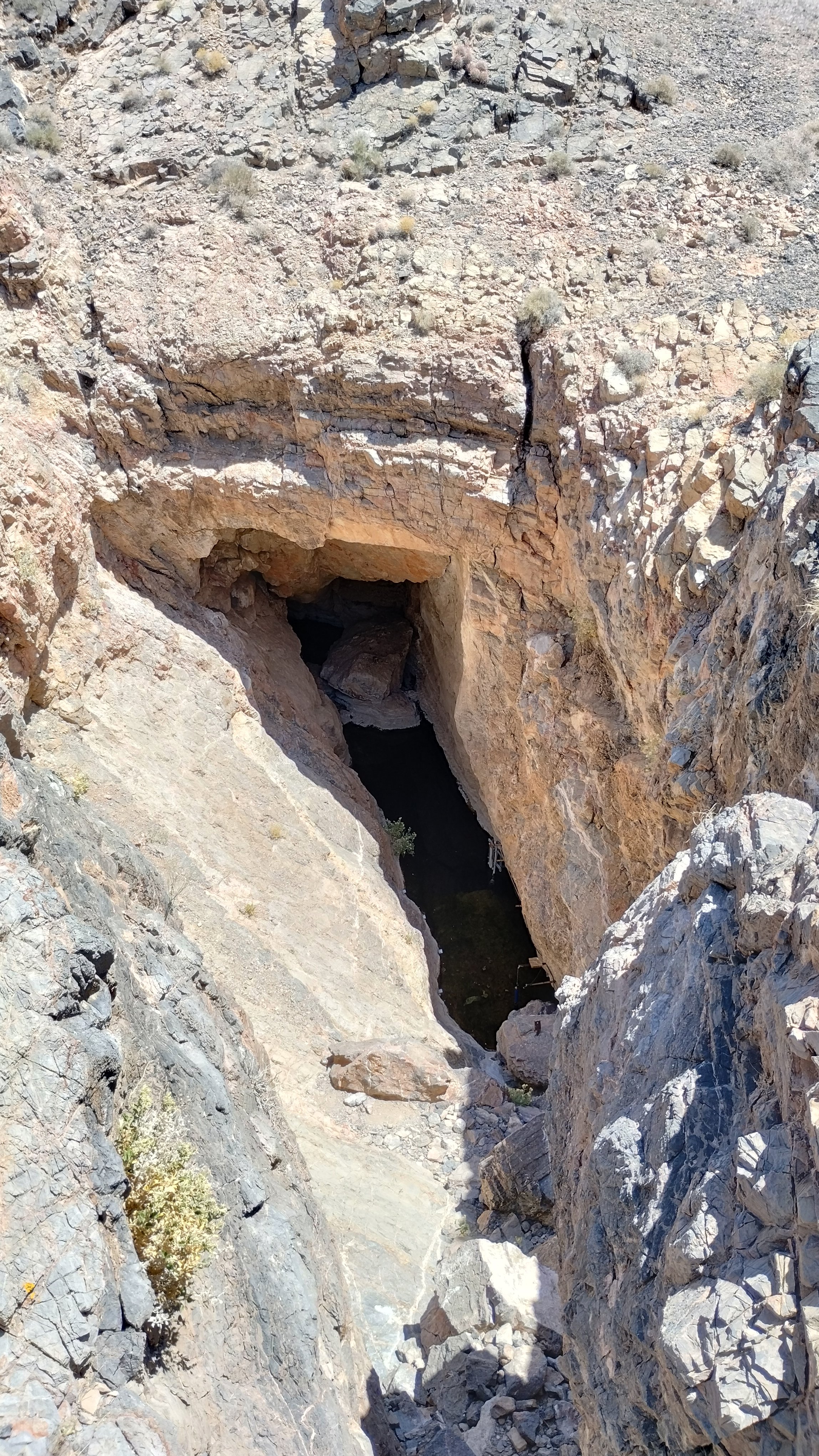
Devil’s Hole, in Ash Meadows National Wildlife Refuge, Nevada. Devil’s hole is a 72′ x 11.5′ water-filled hole in the bottom of a chasm in the middle of an absolutely inhospitable desert west of Las Vegas. And in this sole picture, what you are looking at is the entire universe of the rarest fish in the world, the Desert Hole Pupfish.
Pupfish are a variety of small, gobi-like fish that live in warm, shallow rivers and springs in desert climate, and usually range from 1 to 3 inches long. There are variety of Pupfish in the desert southwest, several of which are endangered:
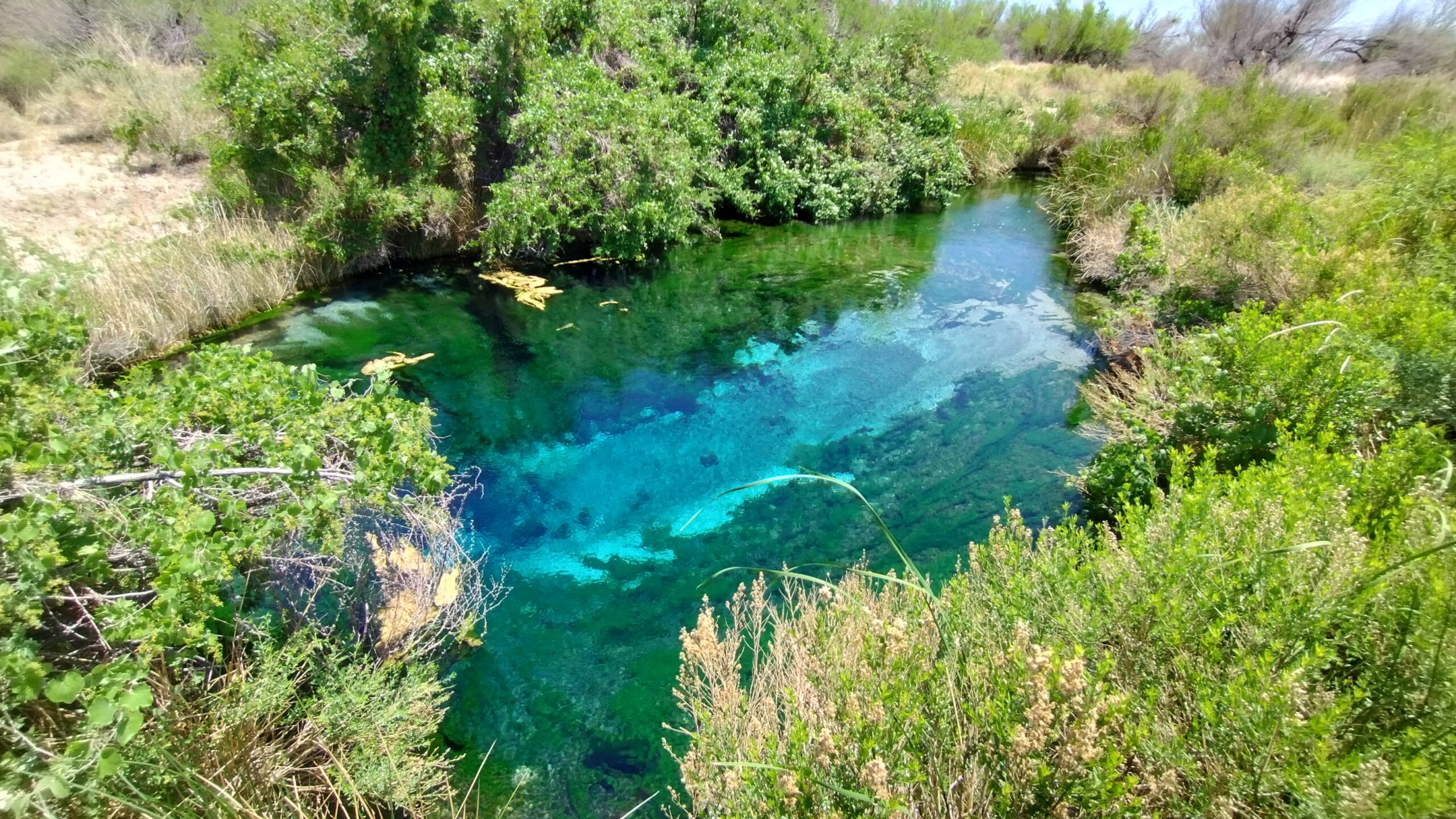
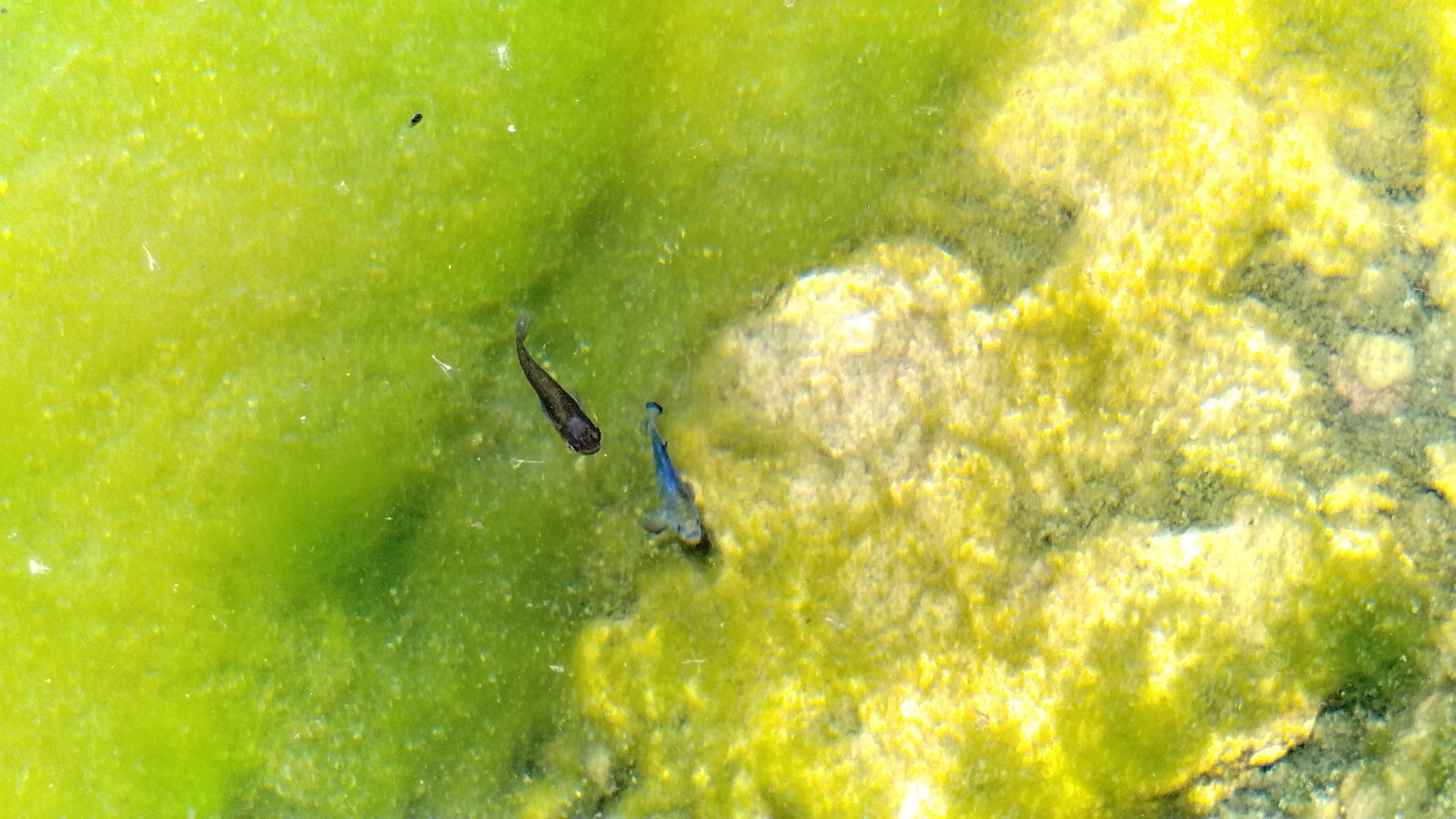
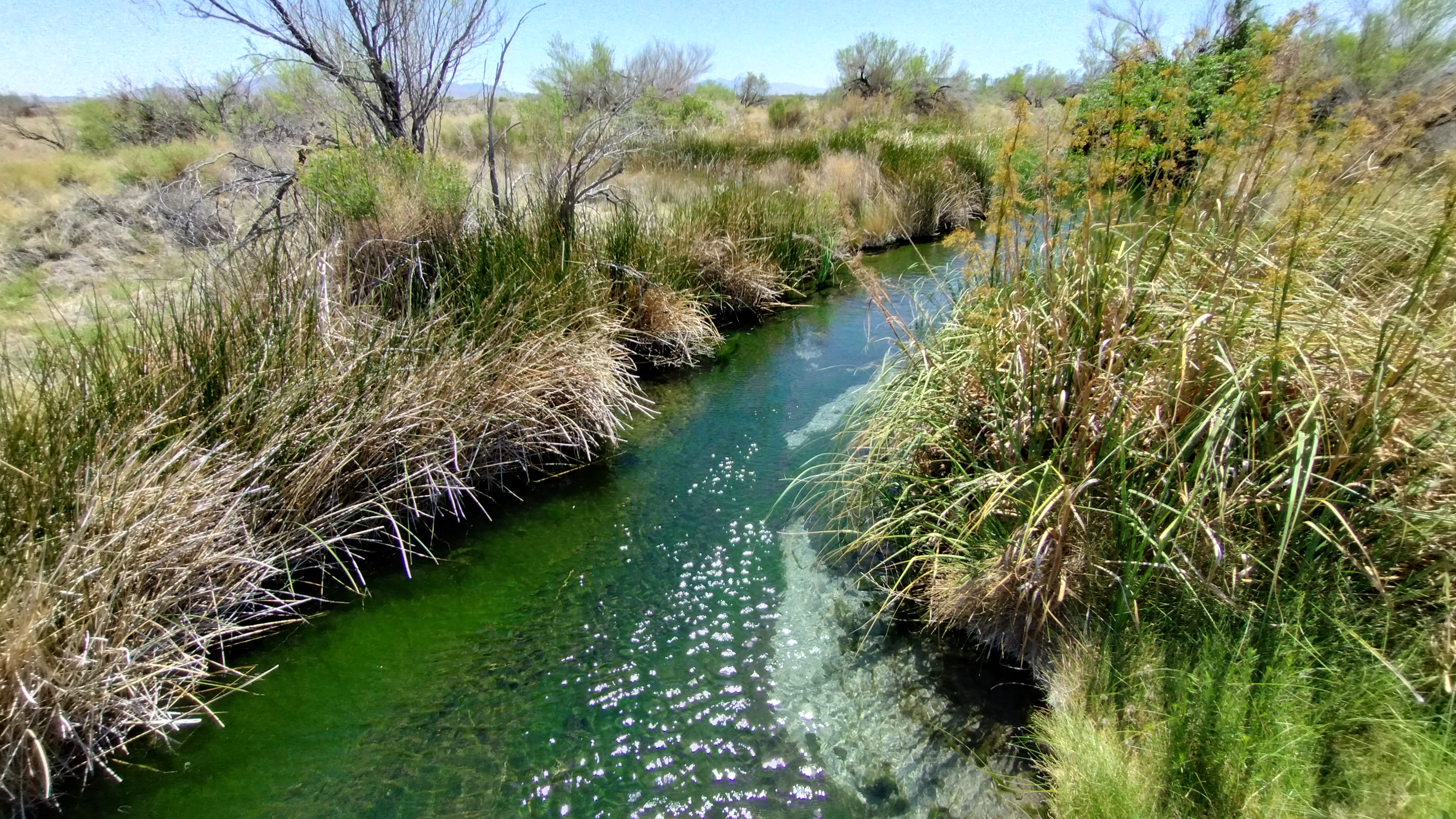
Above is the Amargosa Valley Pupfish, a cousin of the Devil’s Hole Pupfish (about 2″ long, males are blue while females are brown), and the warm desert springs in the middle of the valley that they inhabit. These rivers and springs are in endoheric basins, so the Pupfish that live in them are usually the only fish at all in their biomes.
Already, this is impressive: fish in the desert, living all on their own. But the absolute isolation and rarity of the Devil’s Hole Pupfish is difficult to fully describe, so here is a quick list of facts emphasizing the rarity and beauty of this tiny, tiny fish:
- The current wild population of the Devil’s Hole Pupfish is 150 individuals. There are about 200 more Pupfish in a tank elsewhere in the wildlife refuge, painstakingly recreated to mimic the conditions in Devil’s Hole. The total population of Devil’s Hole Pupfish has never exceeded 500 individual fish.
- The Pupfish do not occupy even the entire Devil’s Hole: the primary area for feeding, living, and breeding, is a single, shallow, 16′ x 11′ shelf at one end of the basin. The entire lives of most Pupfish are spent on this shelf barely the size of an efficiency apartment.
- The Pupfish are estimated to have been completely isolated in the hole for at least 10,000 years, when glacial Lake Manly receded from the area and left the hole isolated ever there after.
- The Pupfish feed exclusively on algae growing in the hole. The algae grow exclusively from nutrients entering the hole from barred owl droppings falling from nests above into the hole below. The Pupfish have no natural predators, except for a tiny, endangered diving beetle that feeds on Pupfish eggs.
- Individually, Devil’s Hole Pupfish are the smallest of all pupfish, barely an inch long at maturity. Pupfish also lay only one egg at a time, rather than a large clutch of eggs like other fish species. They live for approximately one year and lay eggs a handful of times each year.
- The Devil’s Hole is connected to an underground aquifer system that reacts to earthquakes over 2000 miles away. A magnitude 7.8 earthquake in southern Mexico in 2012 created 4-foot waves in the hole that completely drained the shelf and killed all of the Pupfish eggs. Pupfish appear to be able to sense when these earthquakes are coming and will rapidly dive for deeper water until the waves subside, then reemerge and lay as many eggs as possible, even out of the normal breeding season, to restore the population.
And here are those beautiful, infinitely rare devils themselves:
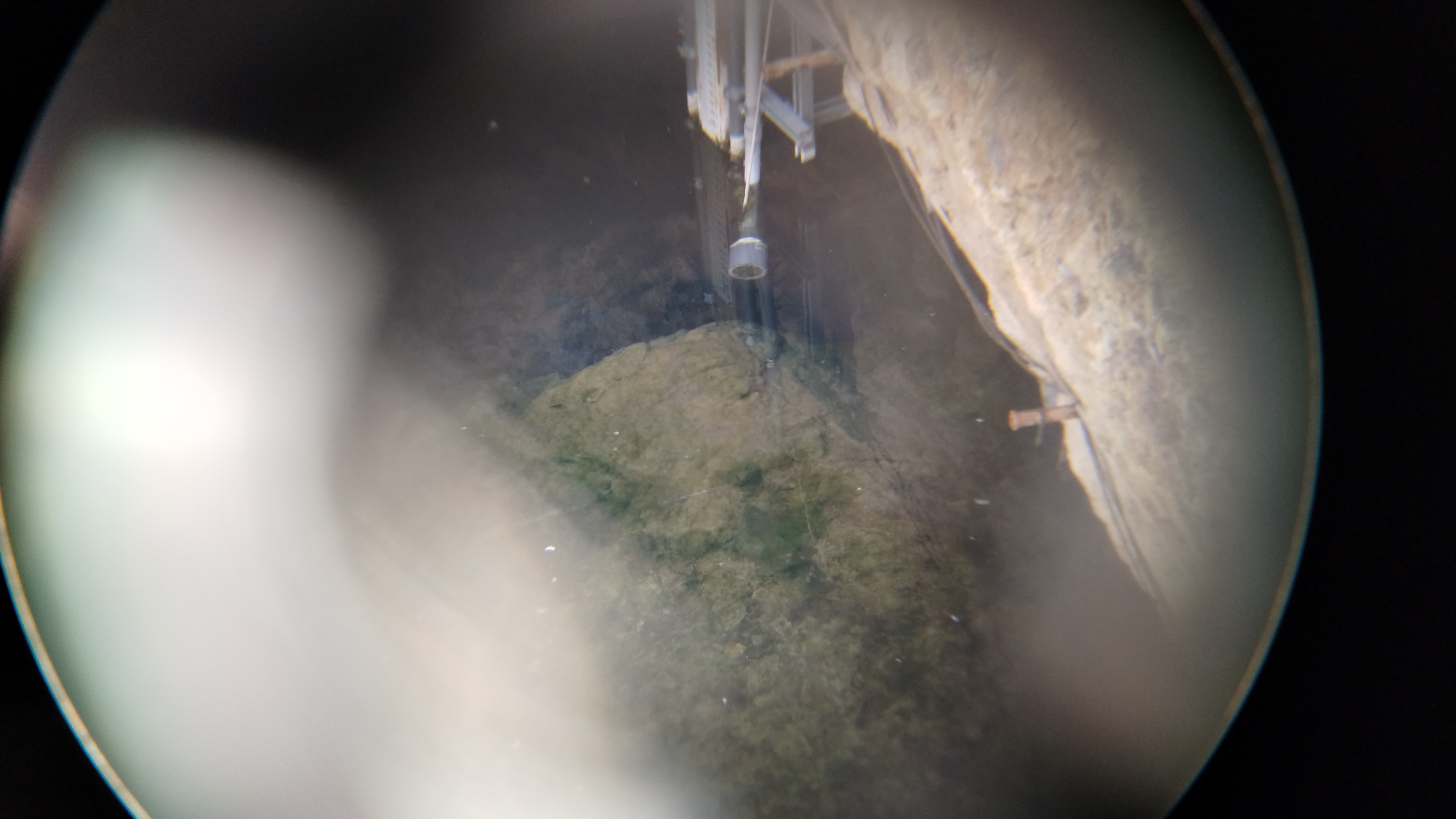
The Pupfish are the tiny squiggles hanging out around the mirror image of the metal contraption in the water (this contraption is a water level gauge). I had to take this photo through my binocular lense, since the hole itself is protected by 12-foot barbed wire fences and round-the-clock video surveillance:
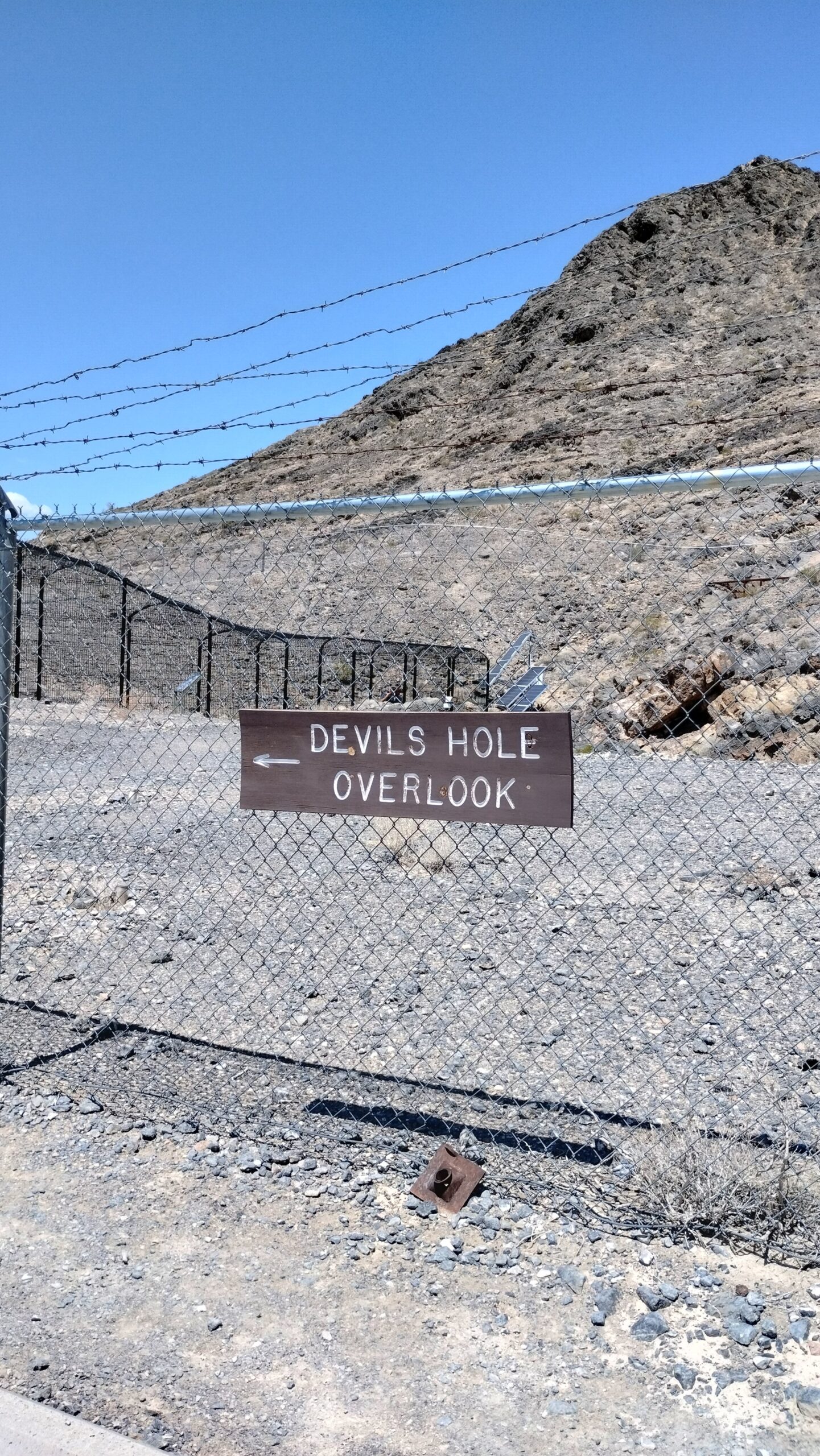
Regrettably, these measures were installed to protect the Pupfish retroactively, not proactively.
It’s difficult to see the Pupfish from the hole even with binoculars, so here is a placard nearby describing them:
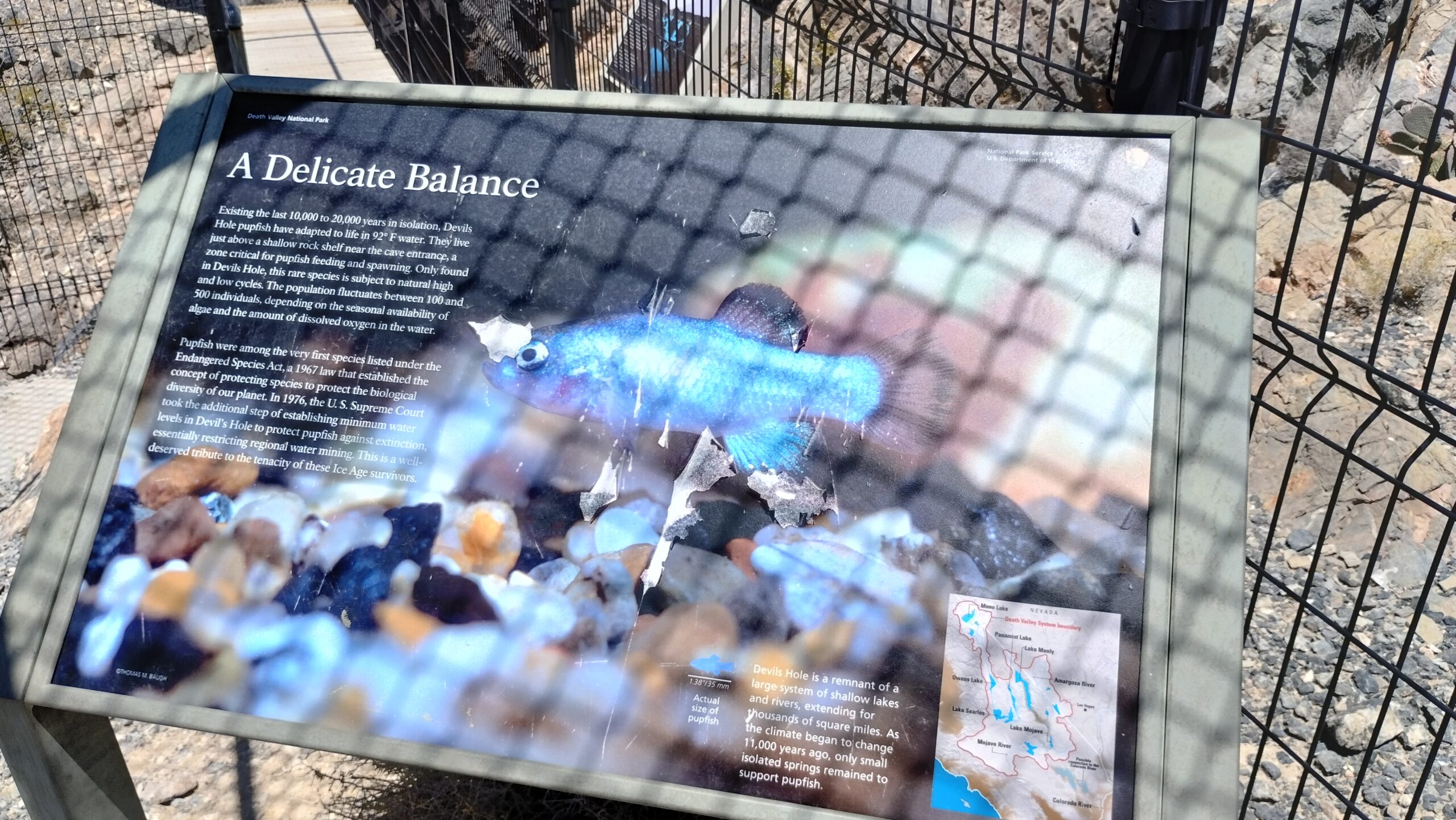
The rarest fish in the world: barely an inch long, living in one hole in the middle of the desert, in barely 180 ft2 of space shared among even fewer individuals. What a precious, beautiful, and ephemeral thing to exist in the world!
As everyone should, I left the Pupfish be and moved on for the day. Vegas had some significantly cheaper AirBnBs Sunday night that they’d had Monday night, so I booked a night in the city to see some of the oddities around there, starting with these standing stones south of town:
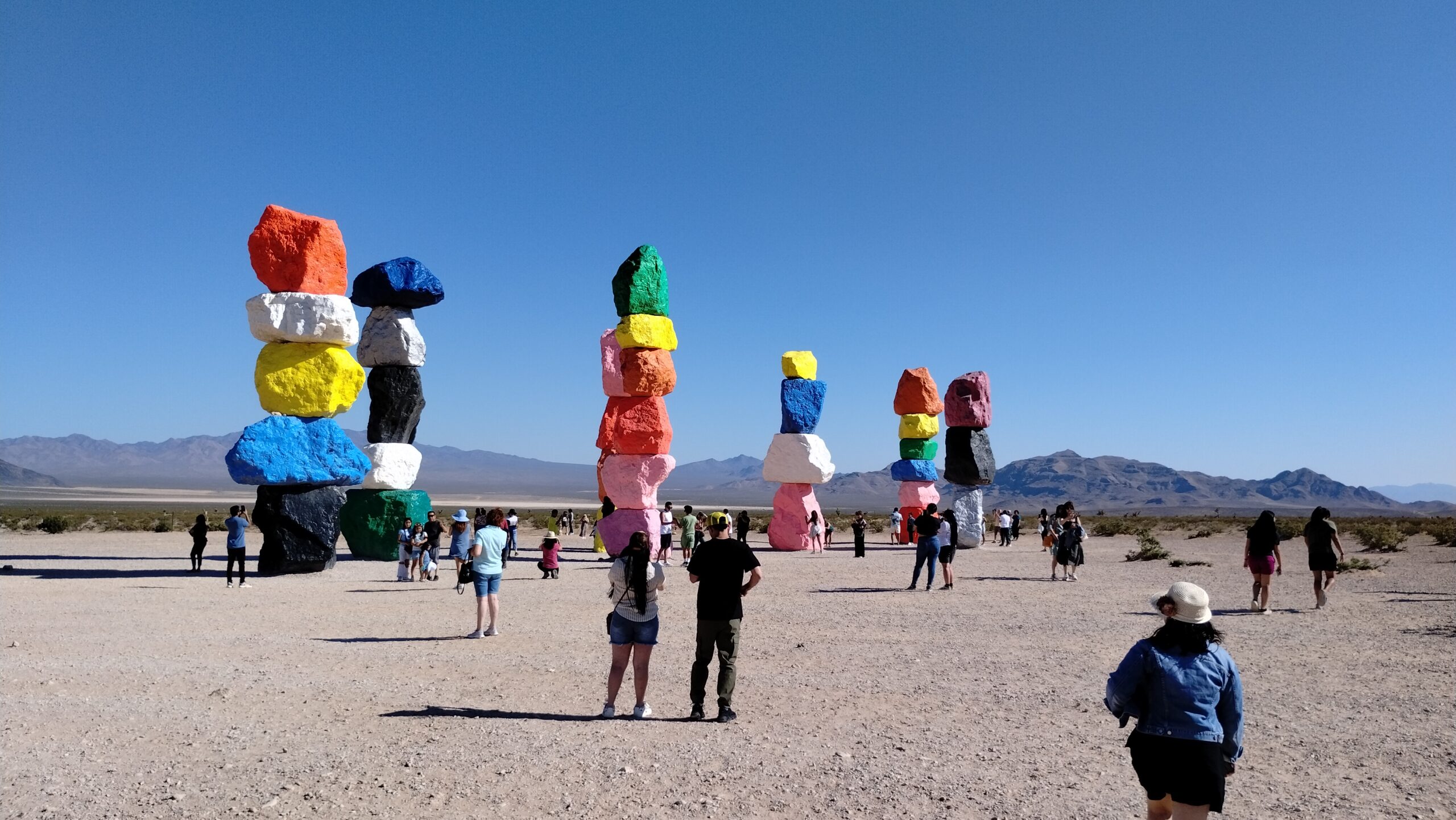
This is a public art piece south of Las Vegas on I-15 named “Seven Magic Mountains” and is a pretty little sideshow in the middle of what is otherwise pretty empty desert. Admission was free and, in my opinion, well worth the stop:
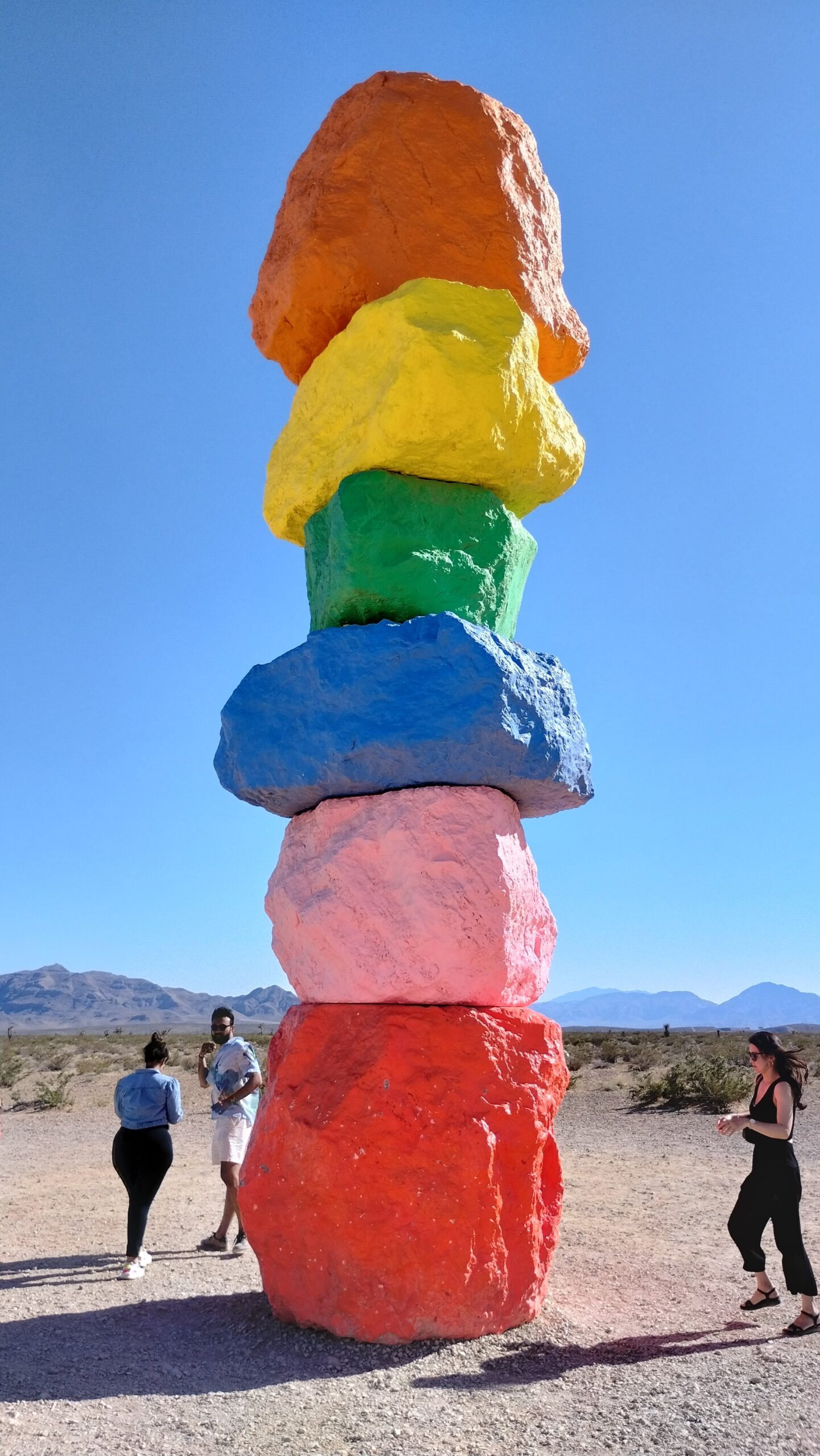
Few people know this, but the Seven Magic Mountains actually represent the adult stage of an extremely rare organism, the Rock Cairn! Rock Cairns live in dry, rocky, desert environments in the American southwest. Like Eels, the exact breeding patterns of Rock Cairns are unknown, but they are believed to grow from tiny eggs (colloquially known as “pebbles”) and gradually grow into the segmented bodies seen in the adults, like insects:
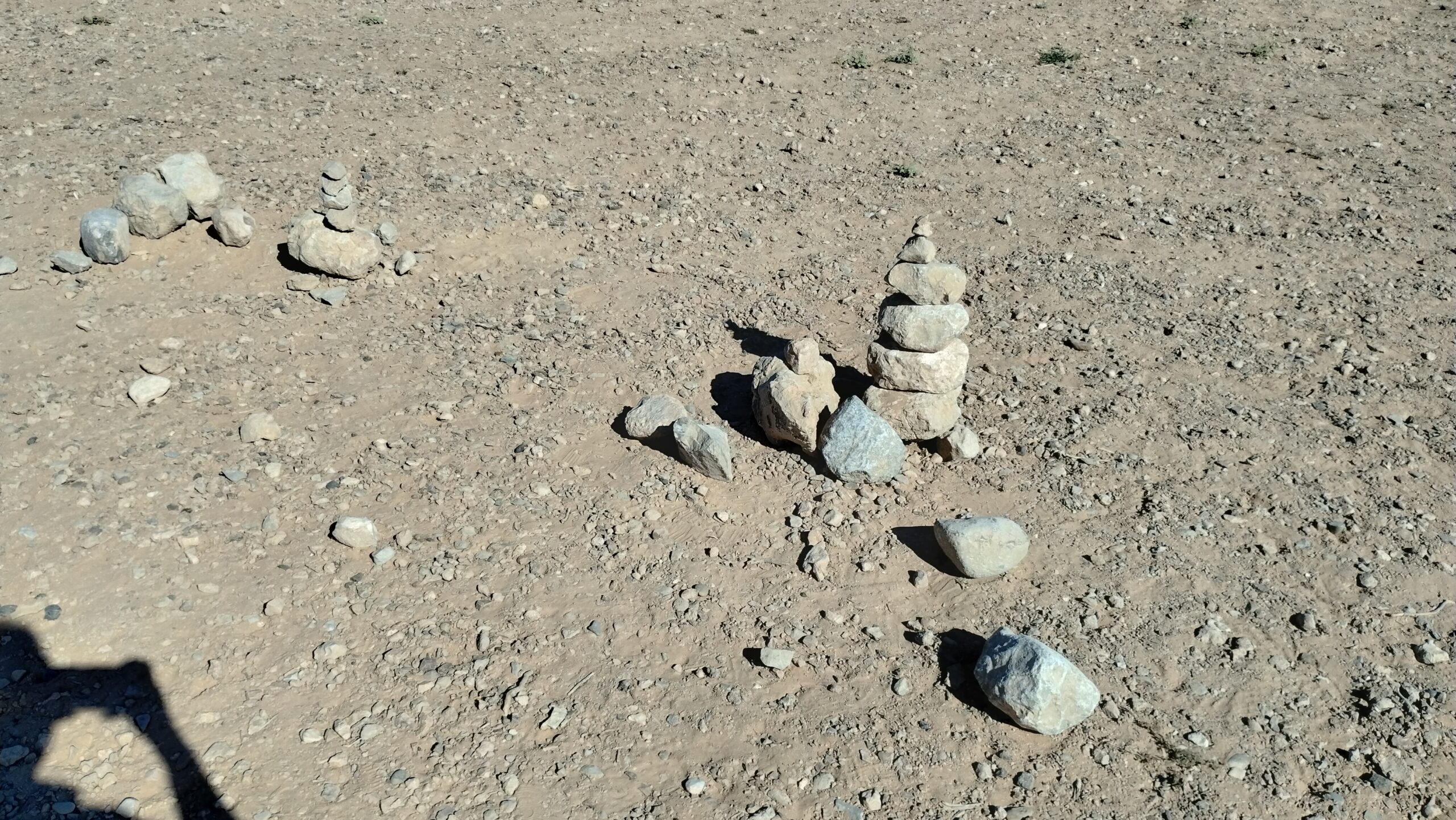
Infant Rock Cairns, perhaps 5-10 years old. Rock Cairns are remarkably long-lived, with some of the oldest wild specimens exceeding 900 years in age.
Rock Cairns raise their young communally to encourage social cooperation and discourage competitiveness. Juvenile Rock Cairns can often be seen foraging just outside the edge, but still under the watchful eyes of, their parent herd:
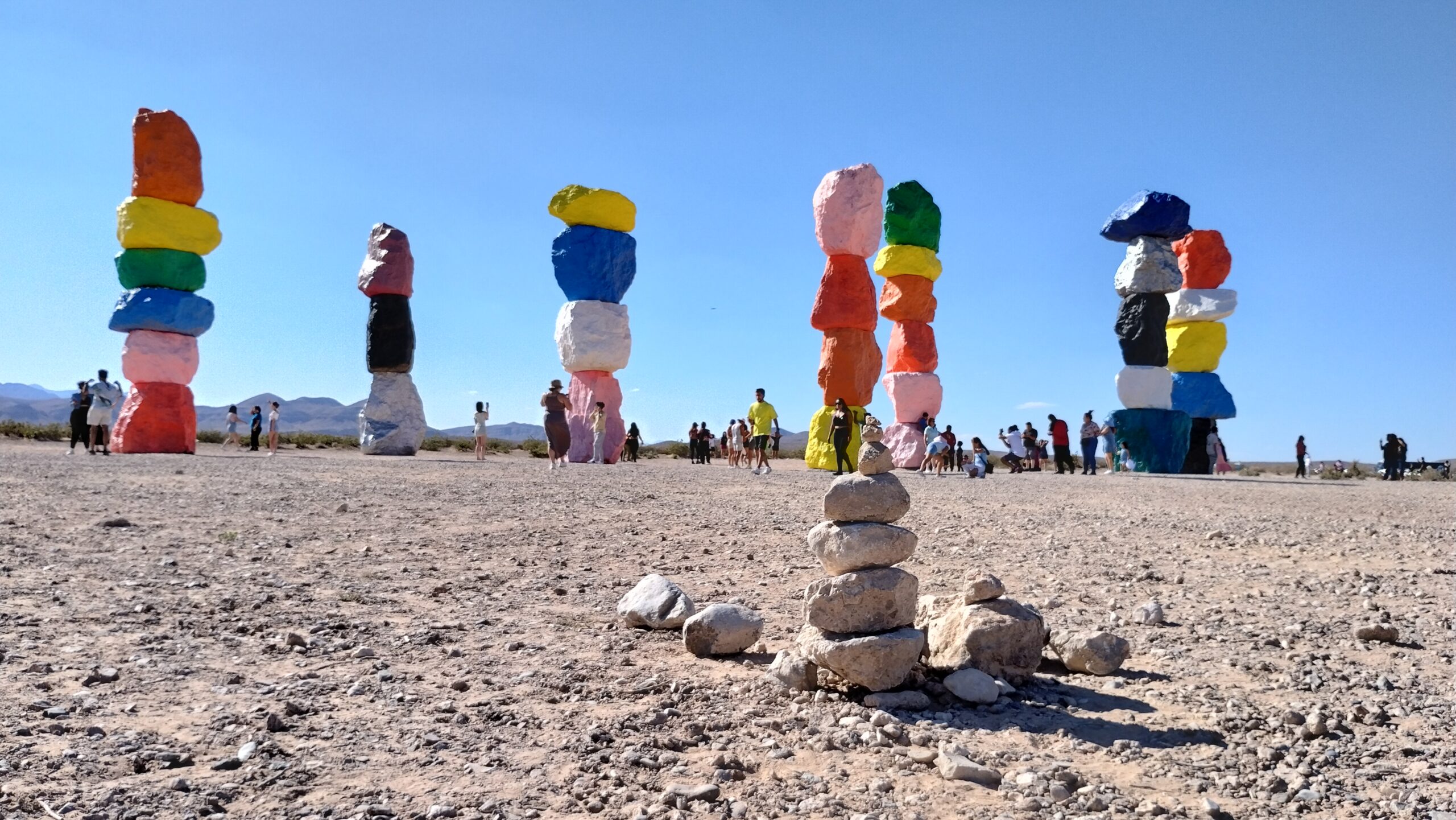
The Juvenile admires its steadfastly protective herd from afar.
Rock Cairns have few natural predators, but like the Amargosa Valley and Devil’s Hole Pupfish, populations are still low due to the restricted ranges of the Rock Cairns. Thankfully, conservation efforts provided for by state and local funding mean that Rock Cairn populations are rapidly rebounding. What a precious and beautiful thing to exist in the world! 💙
Like the Devil’s Hole Pupfish, I left the Seven Magic Mountains population of Rock Cairns to their own devices and moved on. The last thing I wanted to see was just up the road, in a tiny town called Goodsprings, Nevada.
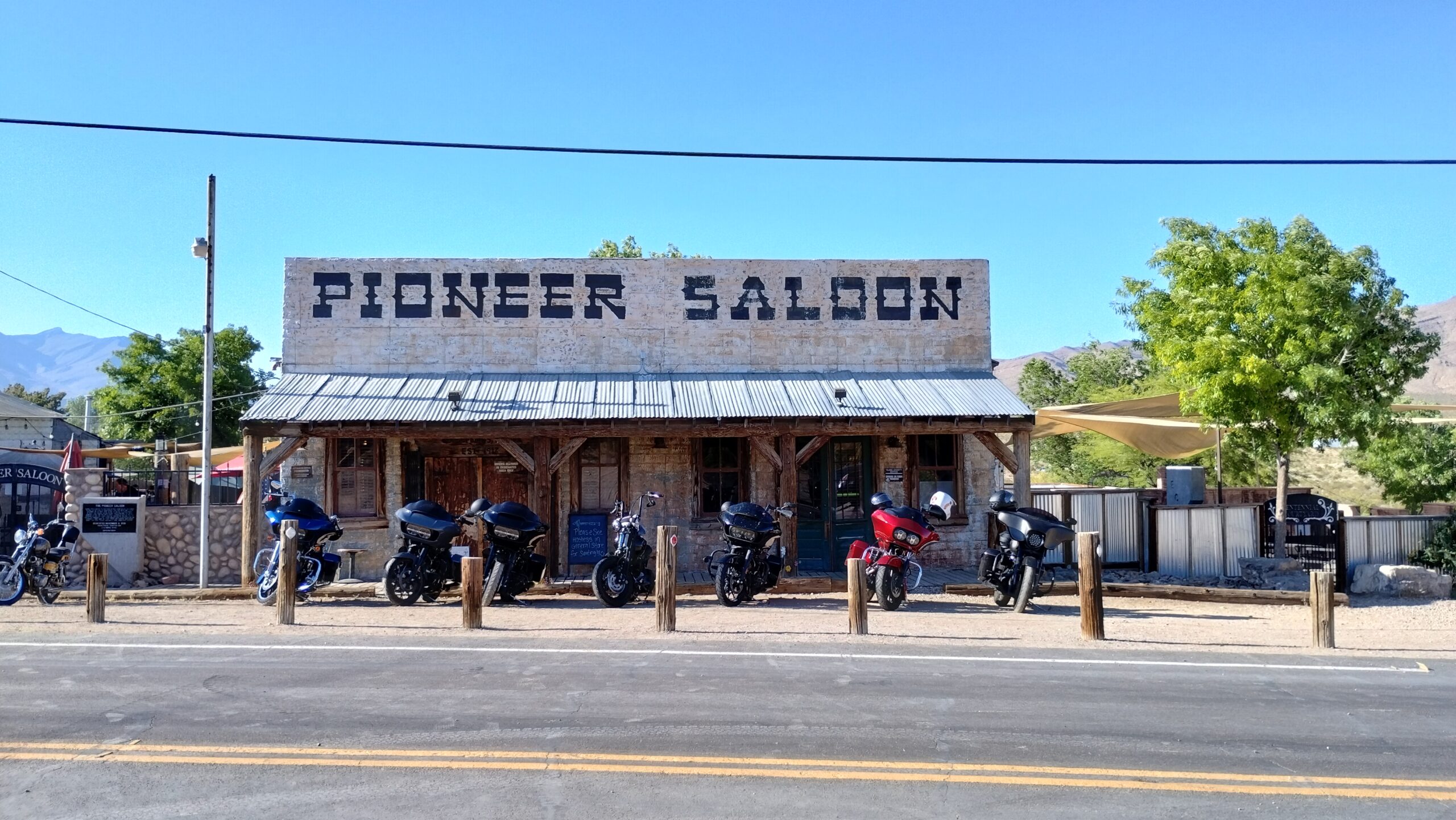
Look familiar? Well, if you’re familiar with the famous video game Fallout New Vegas, released in 2010, you should definitely be familiar: the Pioneer Saloon, and the town of Goodsprings at large, is the setting for the opening phases of gameplay in Fallout New Vegas:
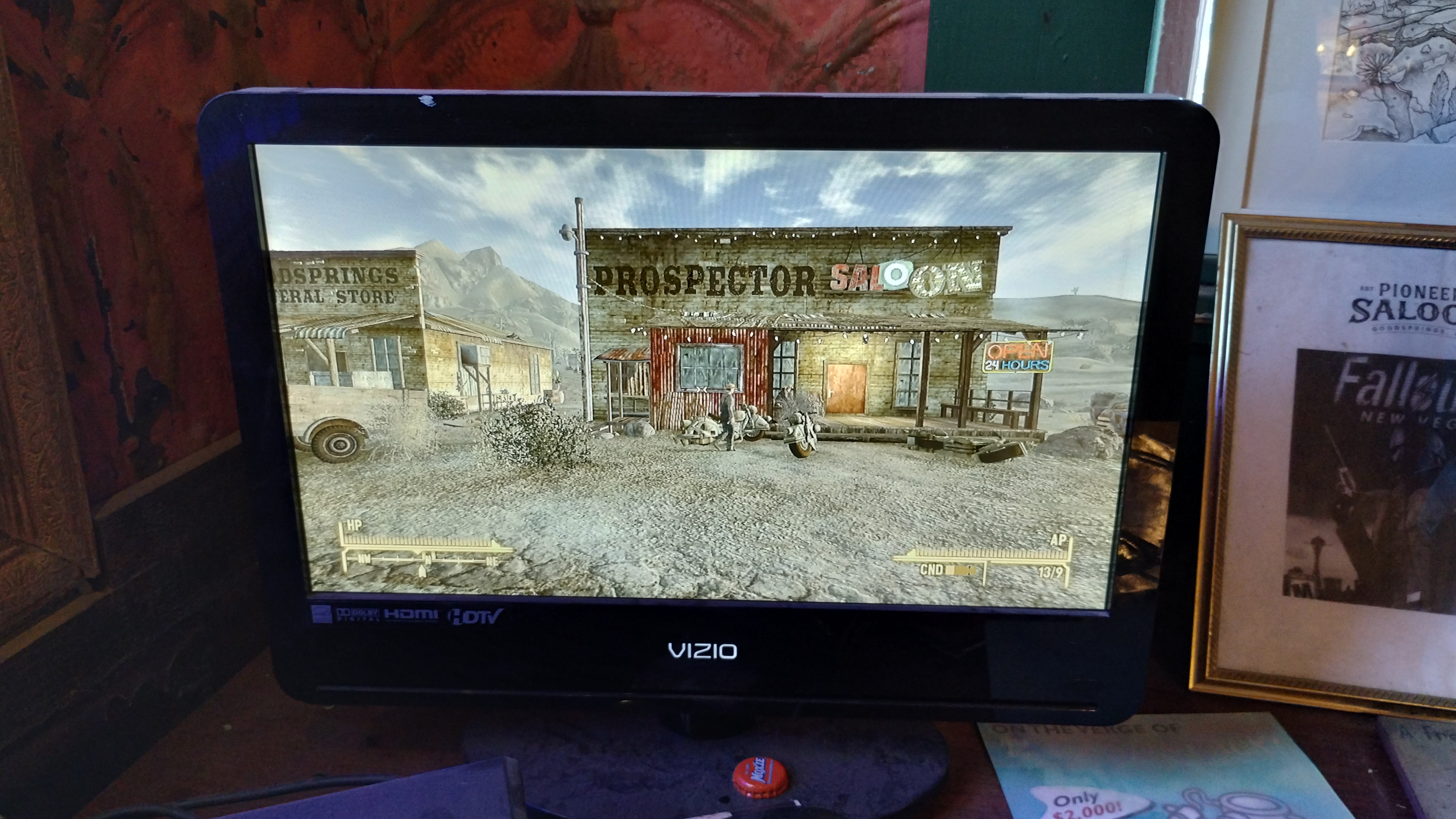
“Hey wait a minute Evan, how did you get side-by-side comparison photos of the video game and the real life location? Did you prepare thanks screenshots ahead of time or something?” Well, no, my curious friend, and this is one of the coolest things about the Pioneer Saloon in Goodsprings; they really embrace their role in the Fallout New Vegas game! They even have a small shrine to the game in one corner of the restaurant!
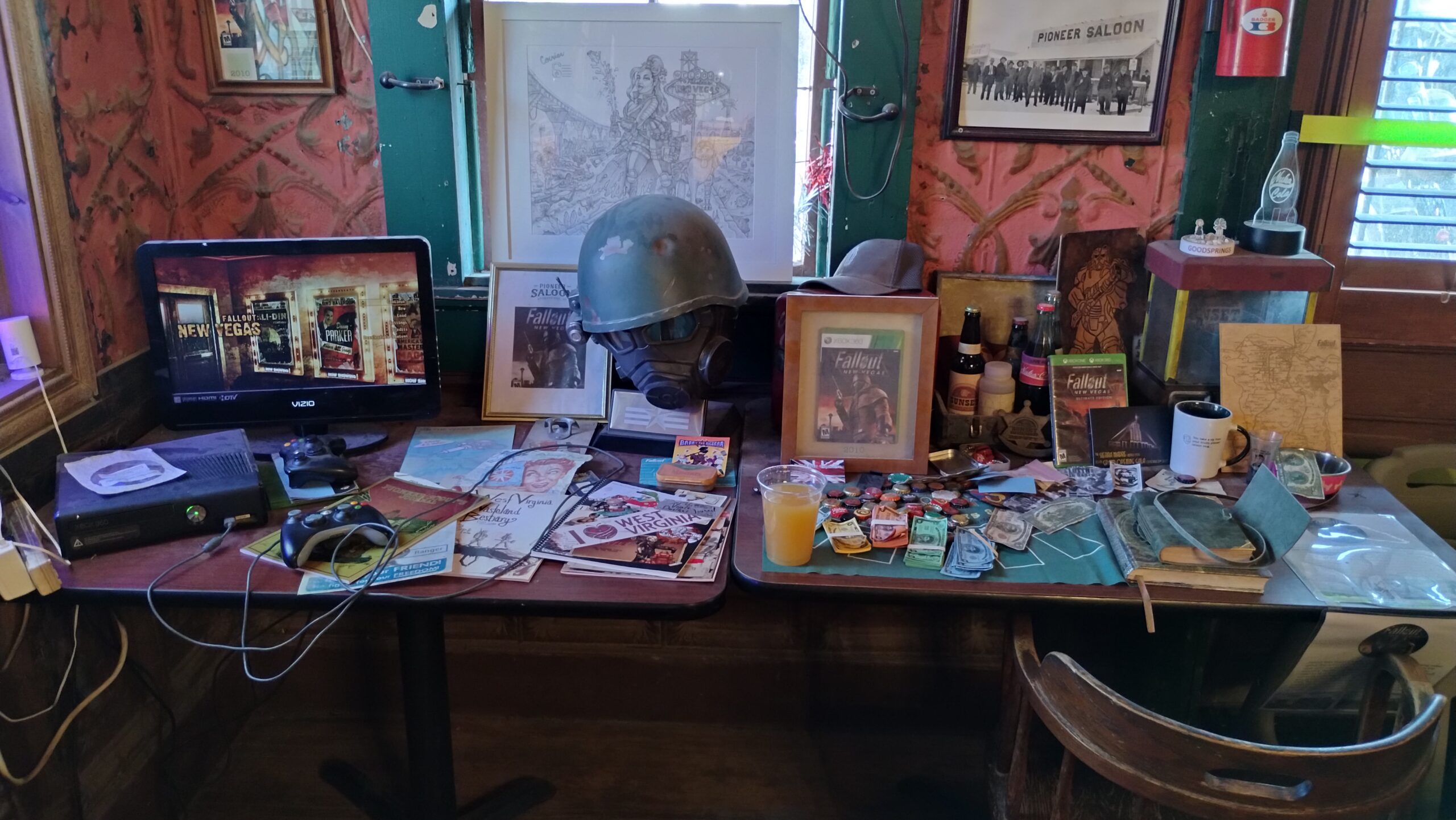
Like a shrine, players drop off trinkets, arts, and crafts related to Fallout New Vegas over the years, with many of them demonstrating a real love for the game:
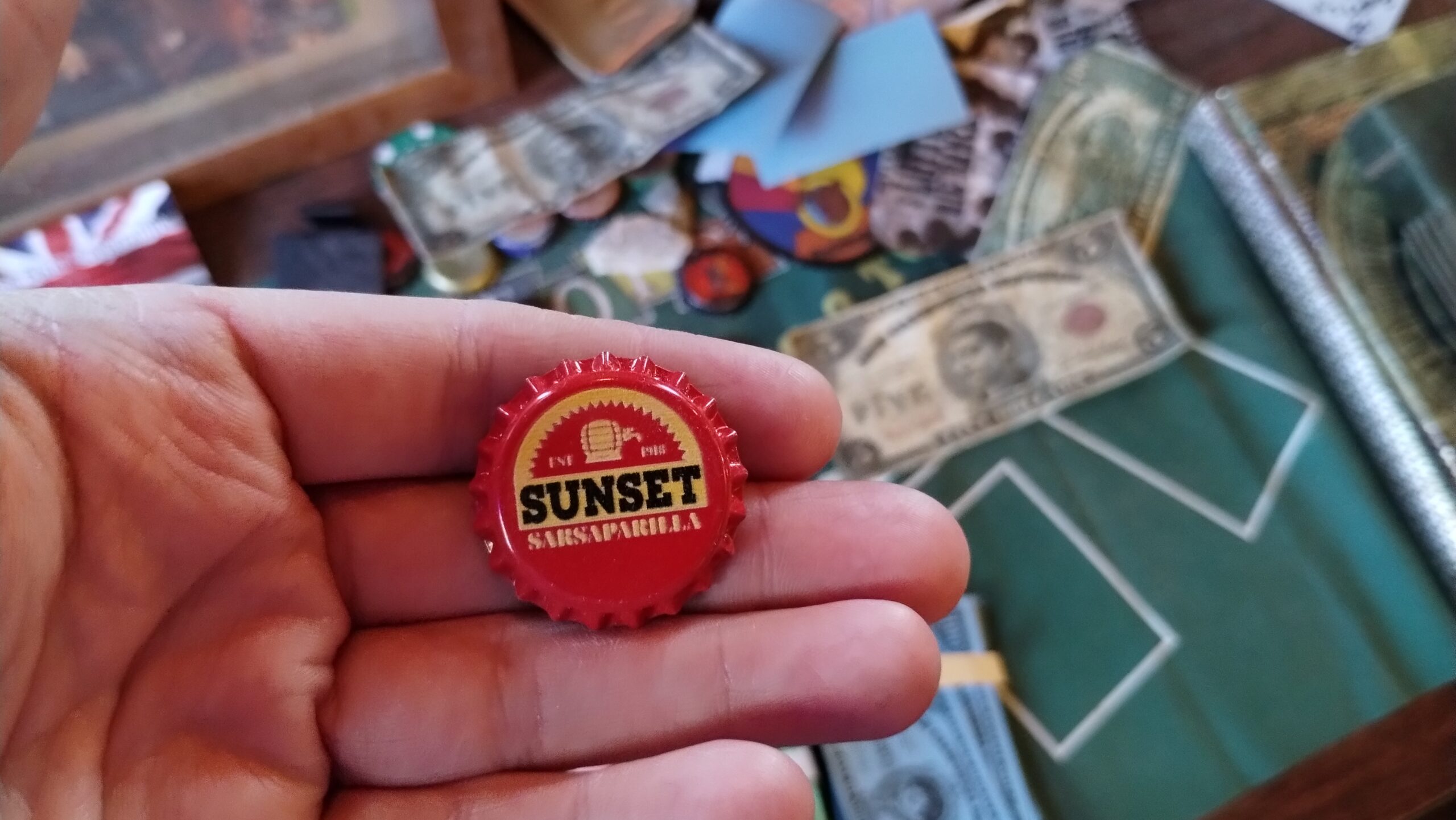
Can you believe someone went through the trouble of making their own bottle caps of the in-game soda? I thought that was spectacular.
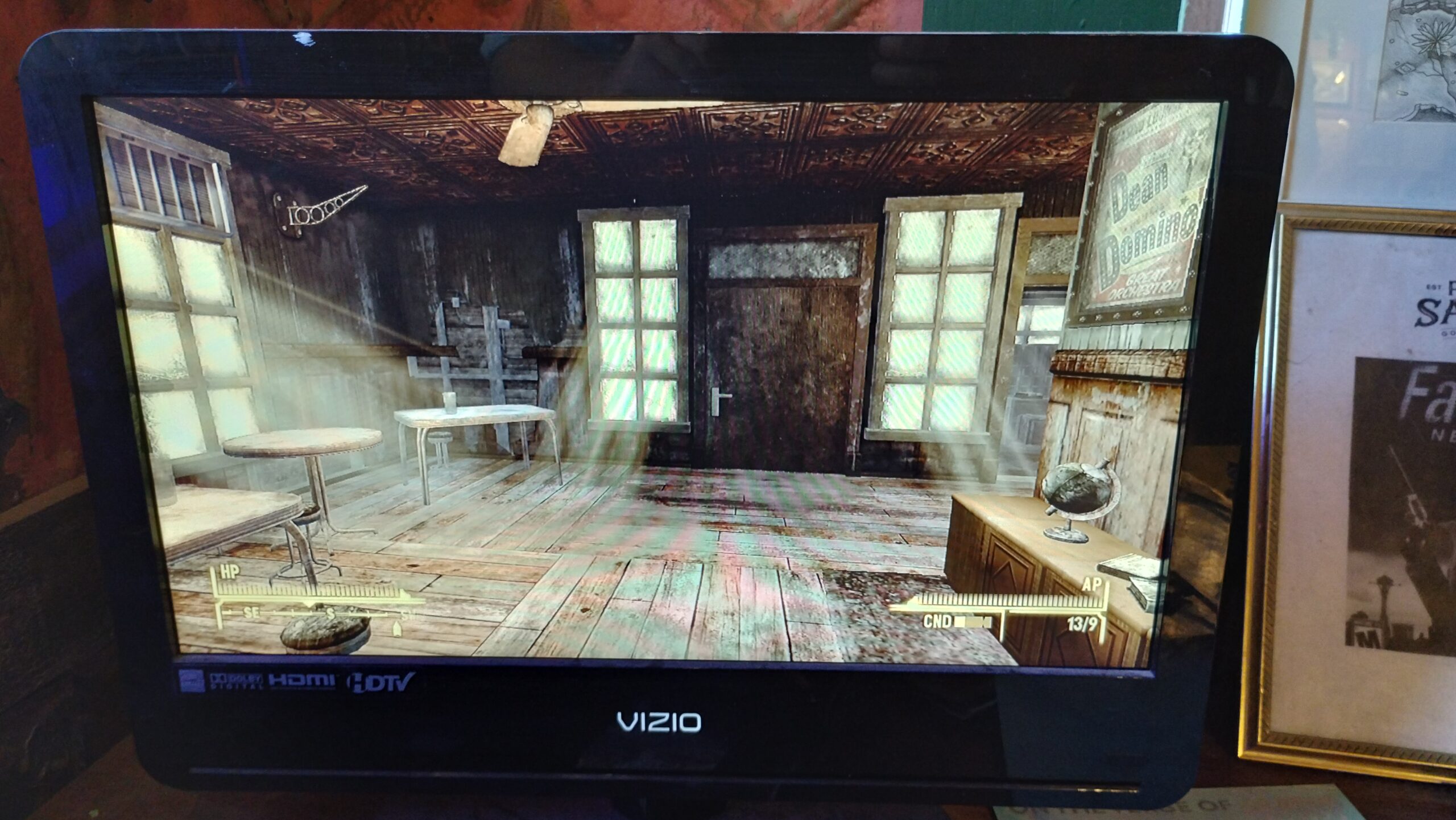
Here is the same corner of this room in-game, by the way. The shrine has an XBox with the game playing for passersby to appreciate.
I too love Fallout New Vegas; despite its flaws and bugs, it genuinely was a big and involving game you could play and replay almost endlessly (and I would know, I’ve logged close to 1000 hours over 7 play-throughs over the years). And as a young, closeted gay kid, Fallout New Vegas was also the first video game I ever played with LGBT representation (you can choose to make your in-game character straight, gay, or bisexual and get access to queer-exclusive dialogue options) and many of the companion and side characters are also queer (Arcade Ganon, my beloved 💙). It meant a lot to me, and it was really, really beautiful to see in person how much it meant to these other fans too!
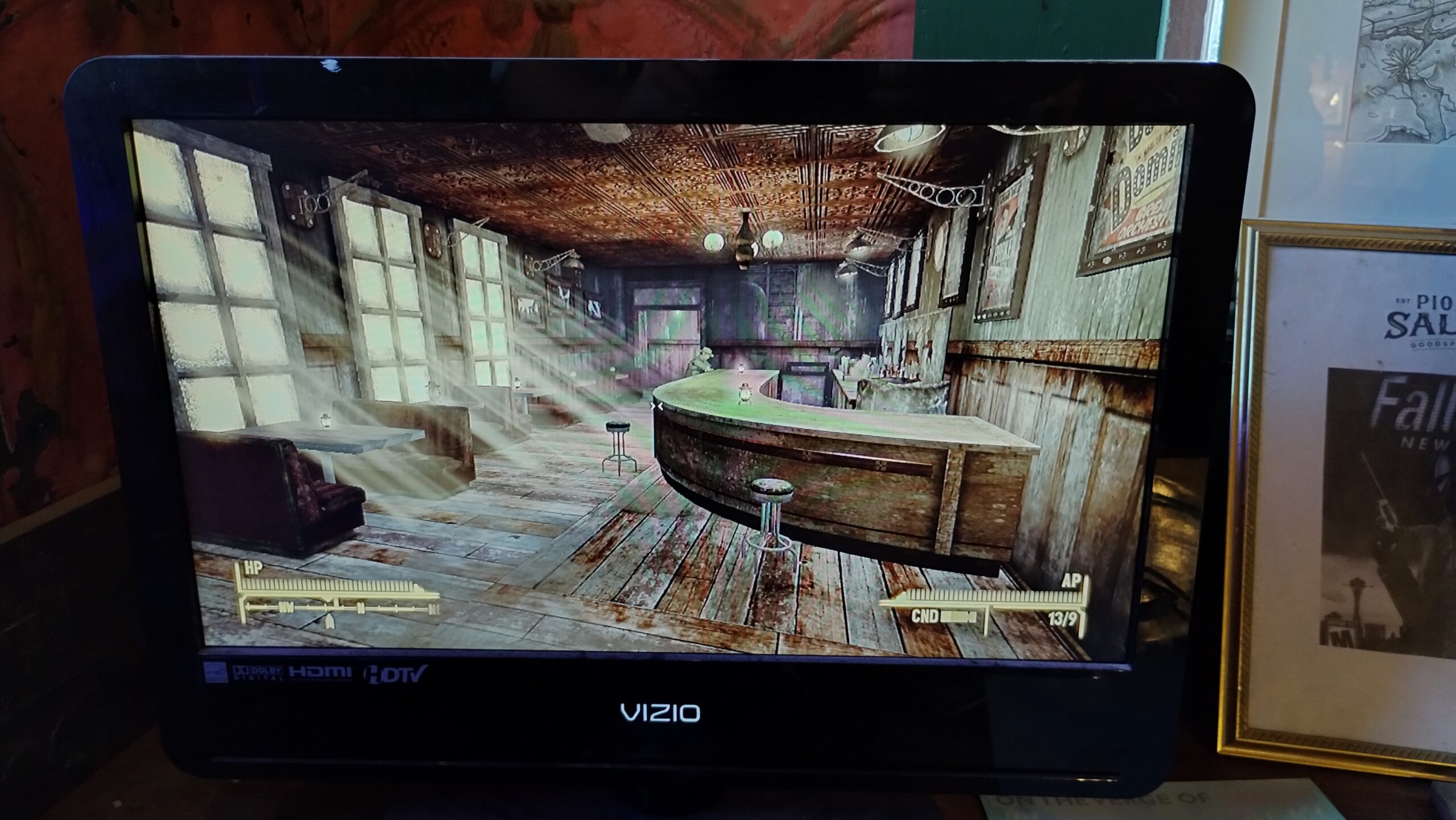
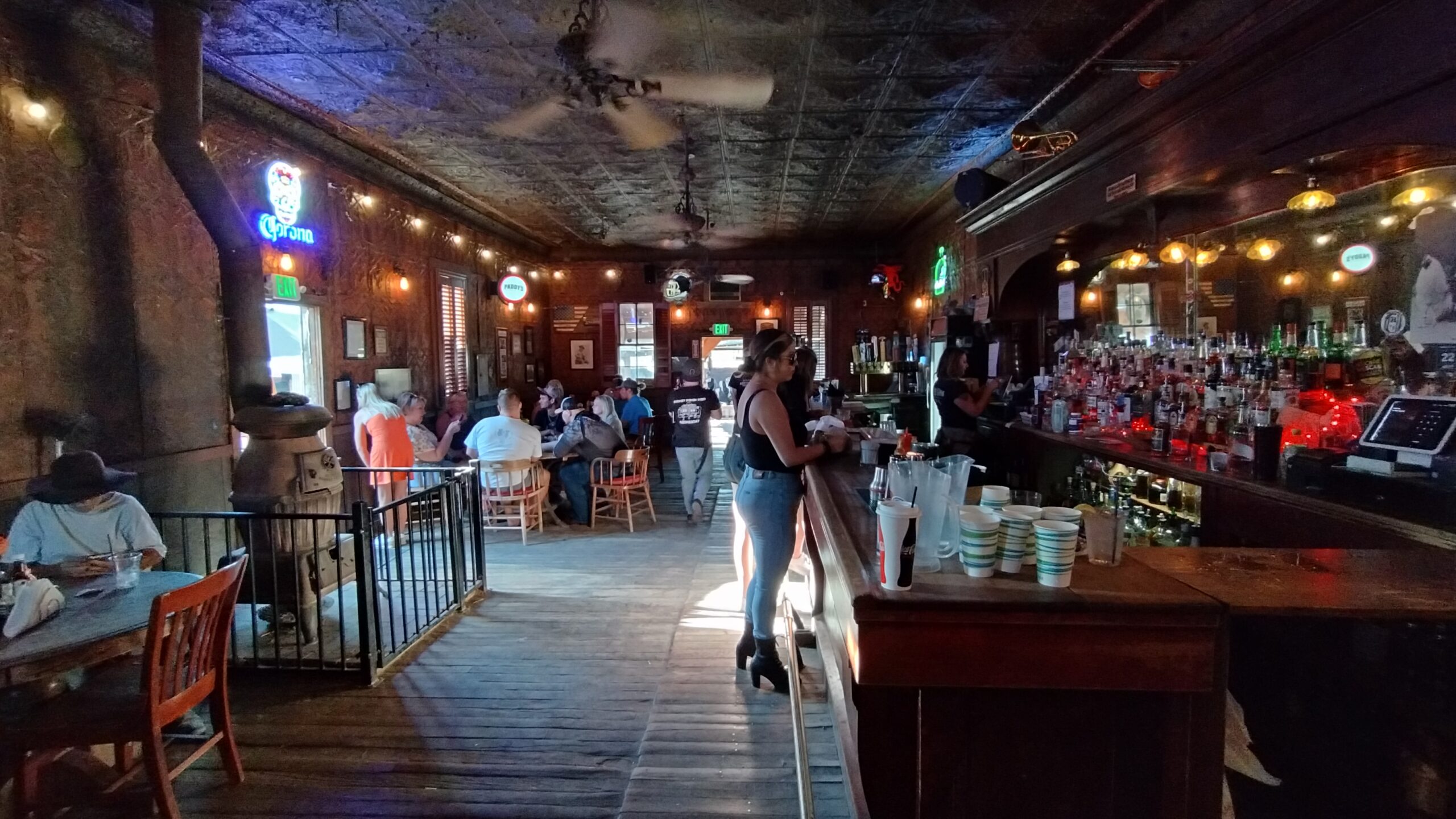
In-game vs. real world bar area.
By then, the daylight was slipping away, and not wanting to fight the slew of giant radscorpions that I knew lay just east of town, I decided to make my way back down the road to Vegas (and @Andrew Sulisz, you better believe I had Big Iron by Marty Robins playing the entire time).
Vegas, at night, is quite a site:
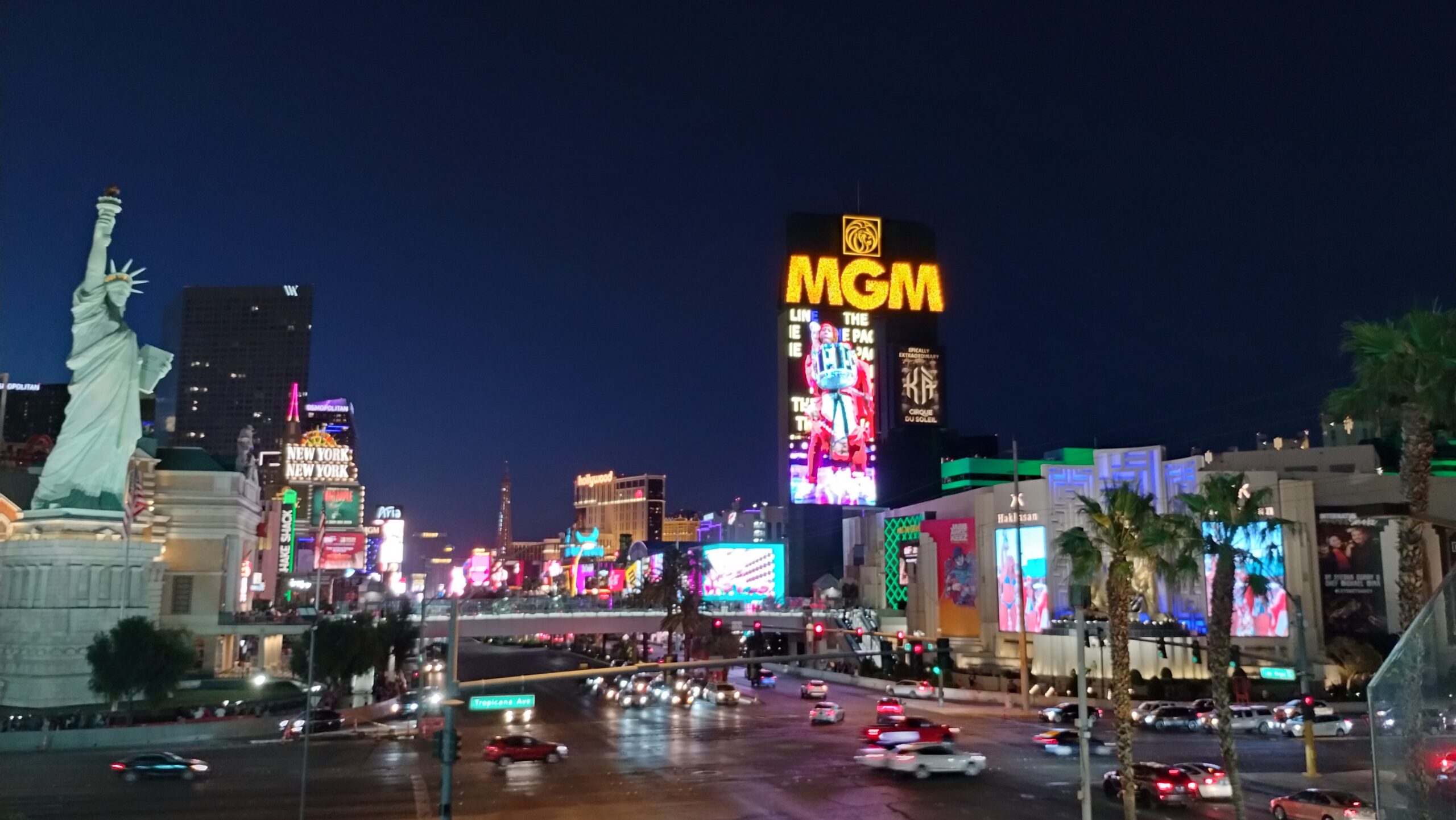
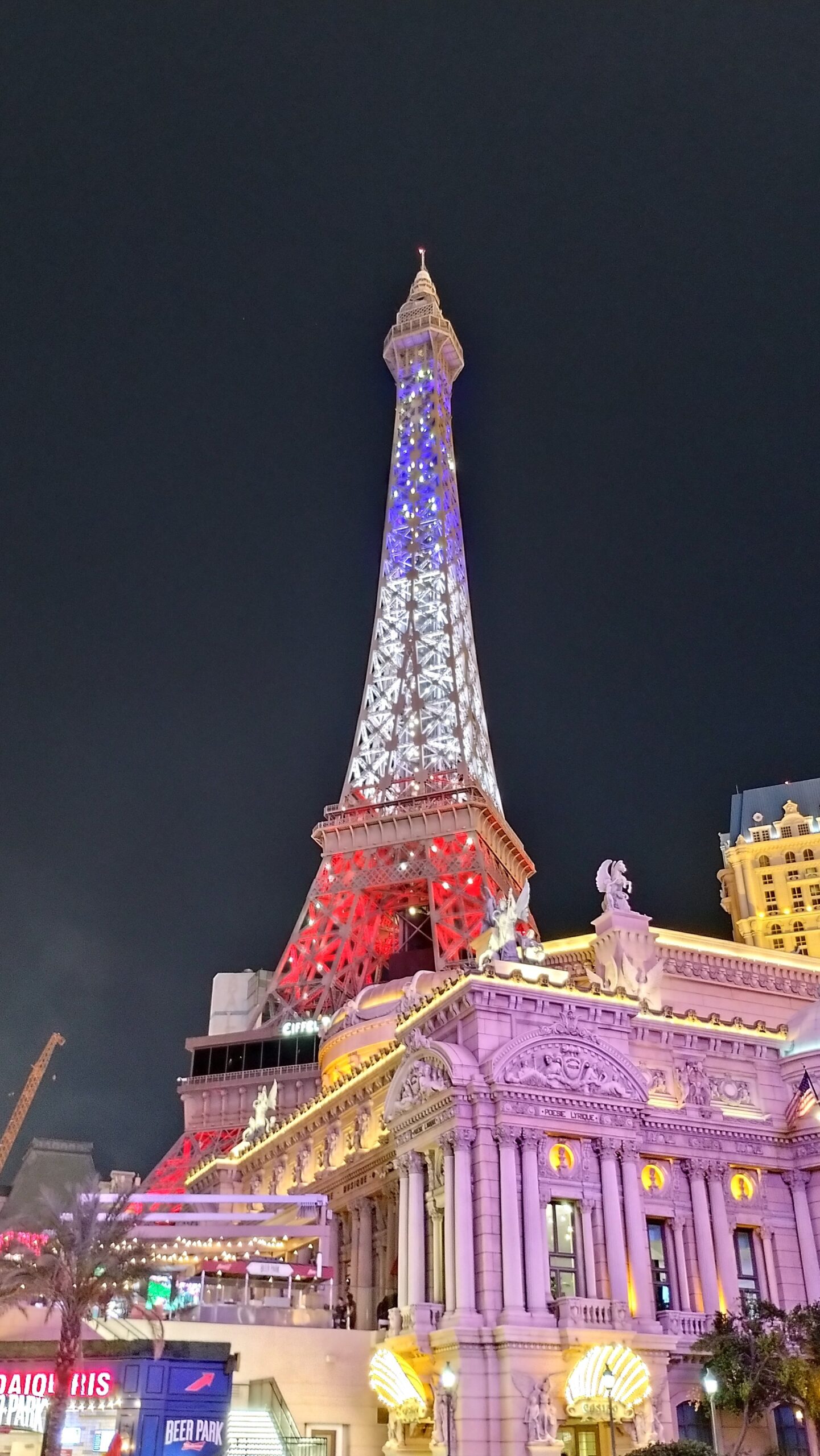
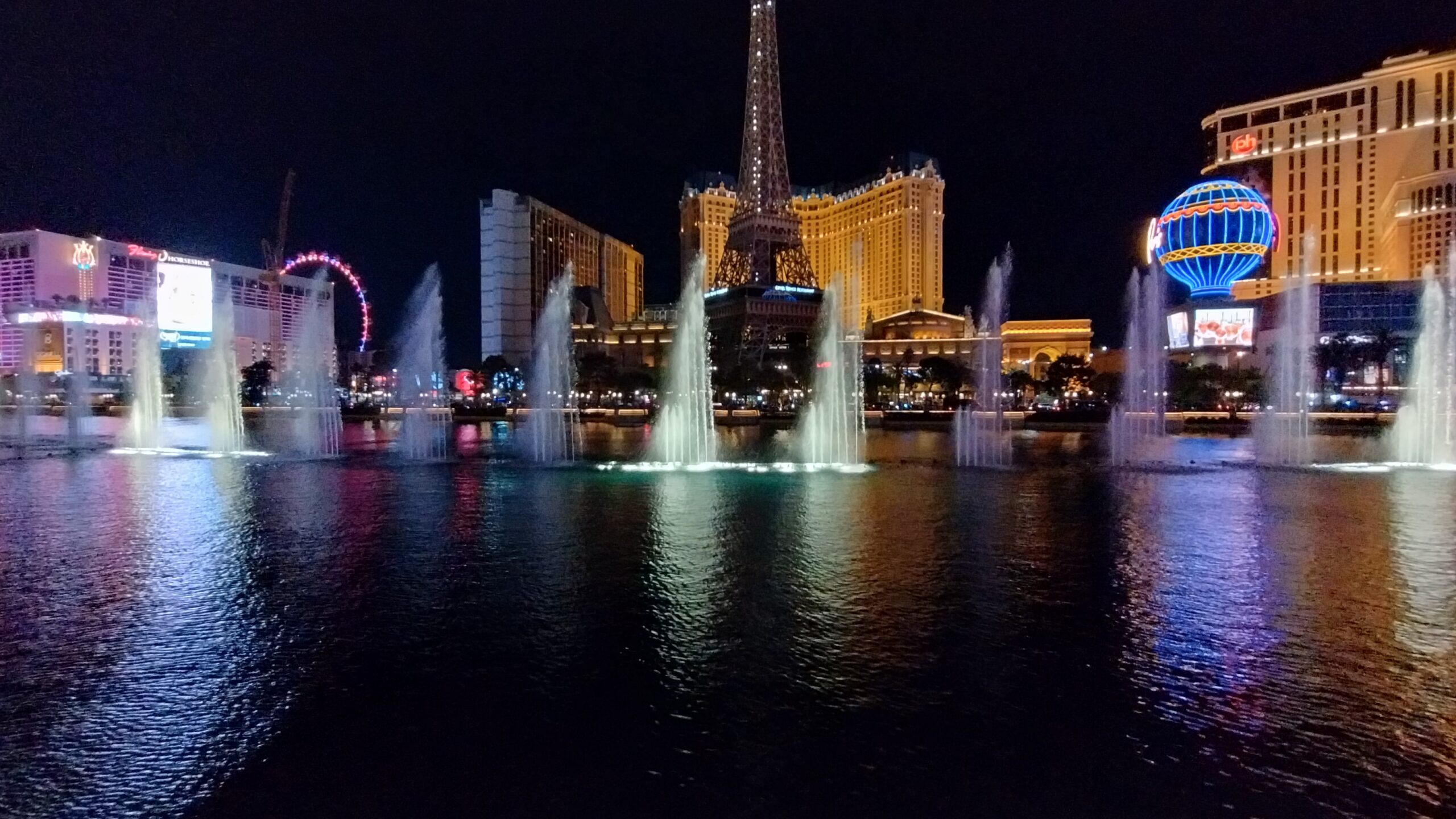
Even on a Sunday, the whole town feels like an enormous, ostentatious sensory overload, and that’s because it is. Seeing, hearing, even smelling everyone and everything in every direction feels like being 8 and eating too much sugar while watching a midnight marathon of your favorite cartoons at Blake Burgess’s house (and then things get weird because Robot Chicken comes on at 12:30 AM and you realize why your parents were so insistent on bedtimes).
I did get a nice recommendation to see the Bellagio though, and that was legitimately cool:
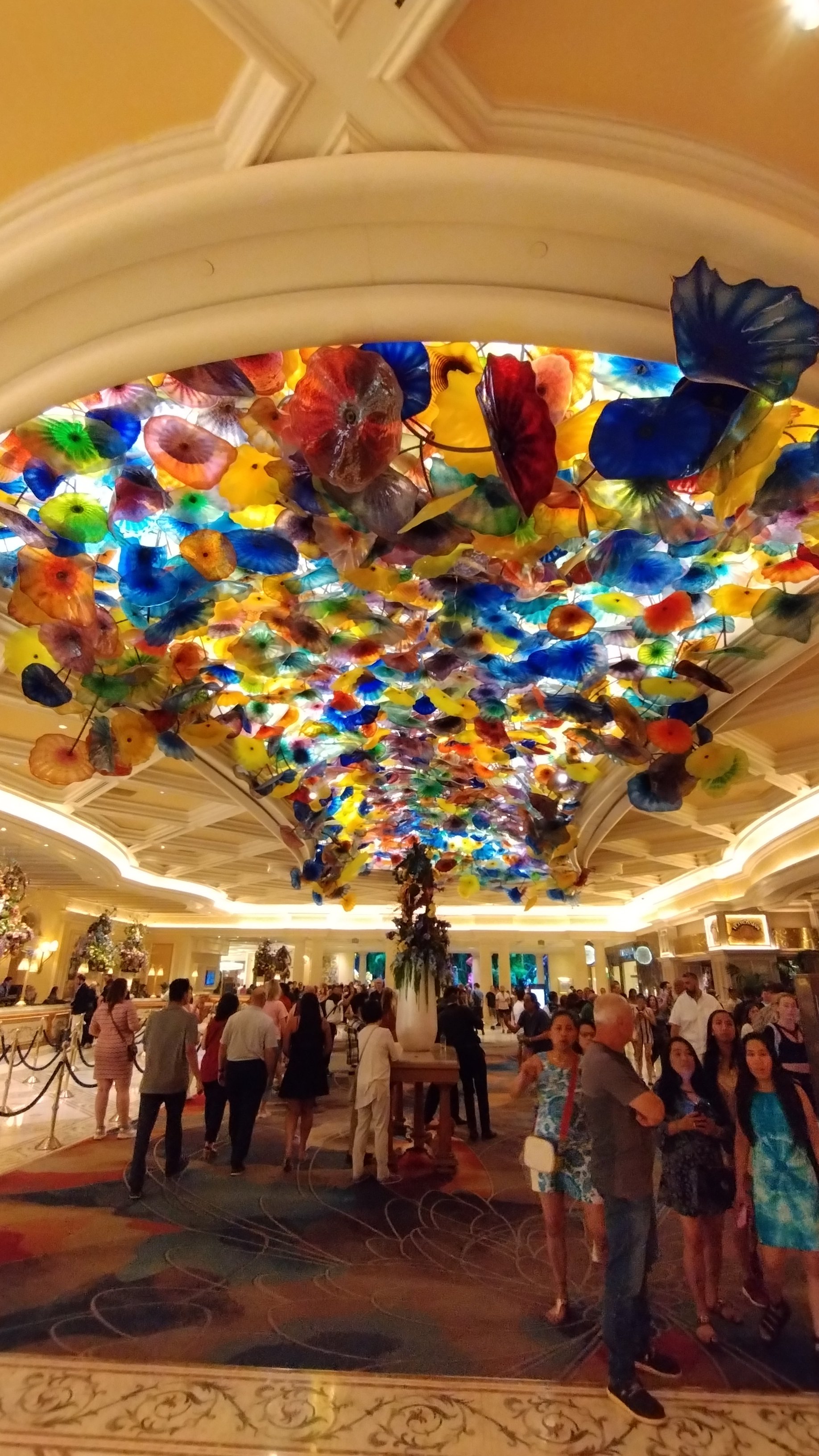
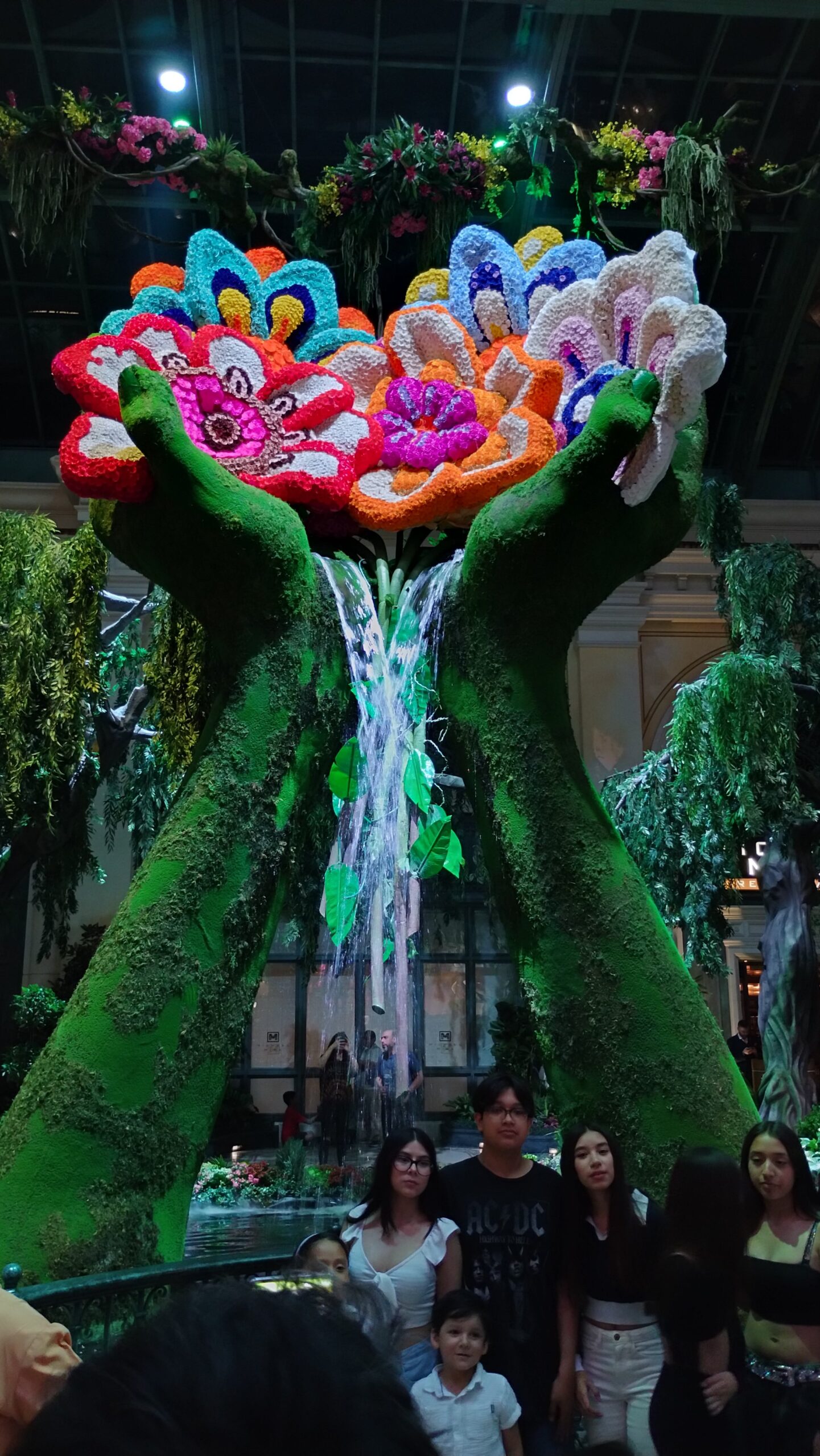
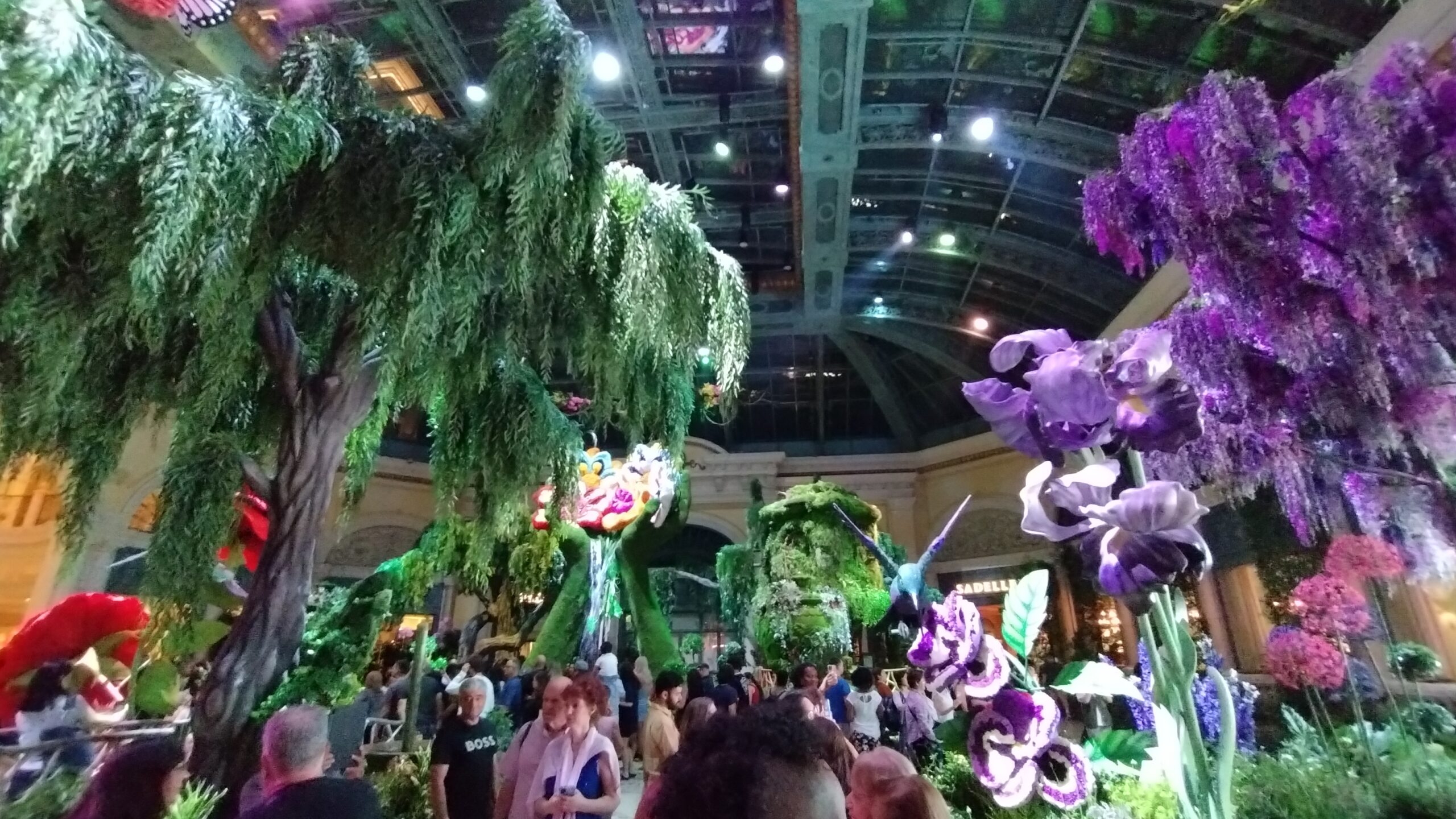
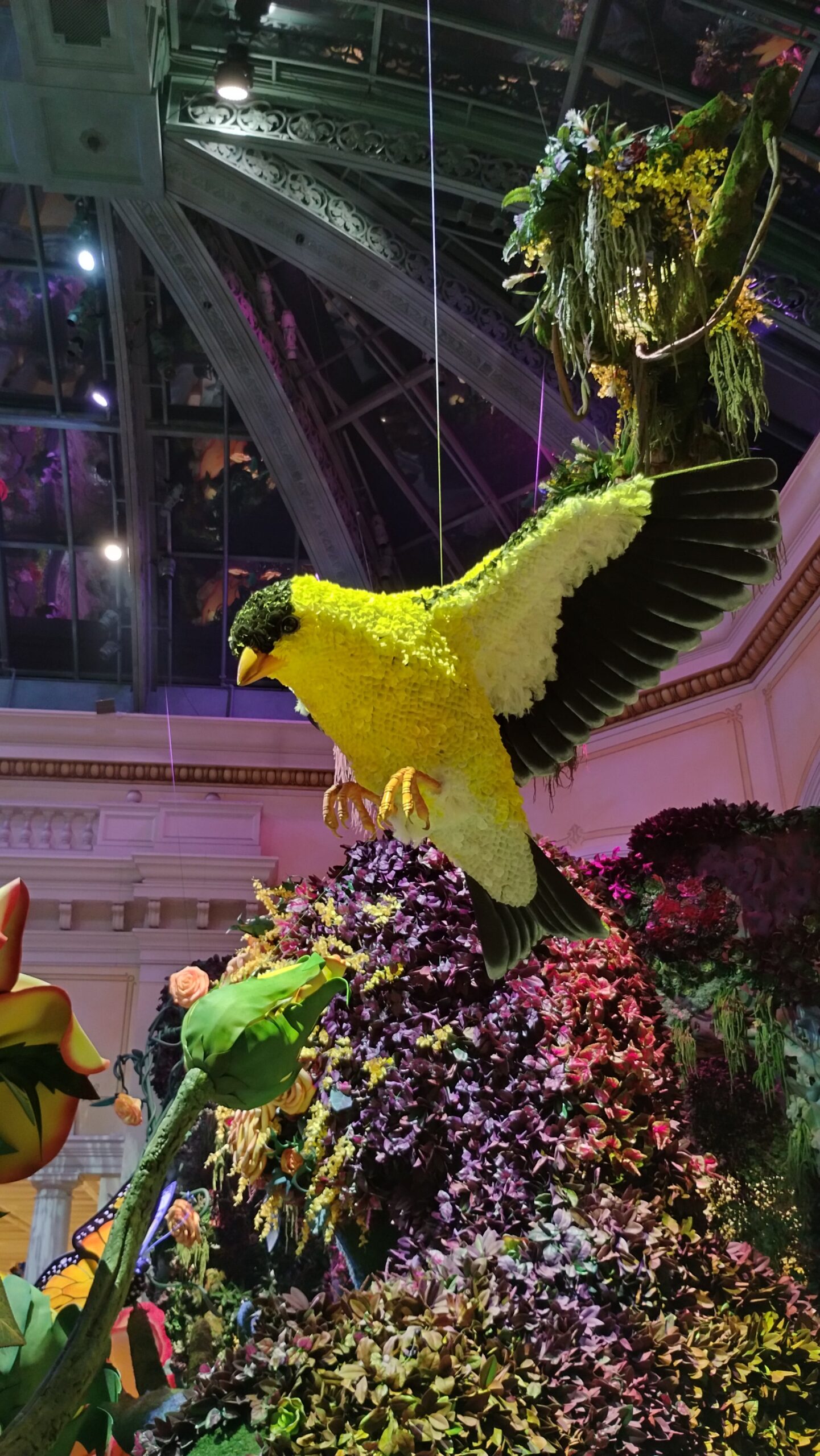
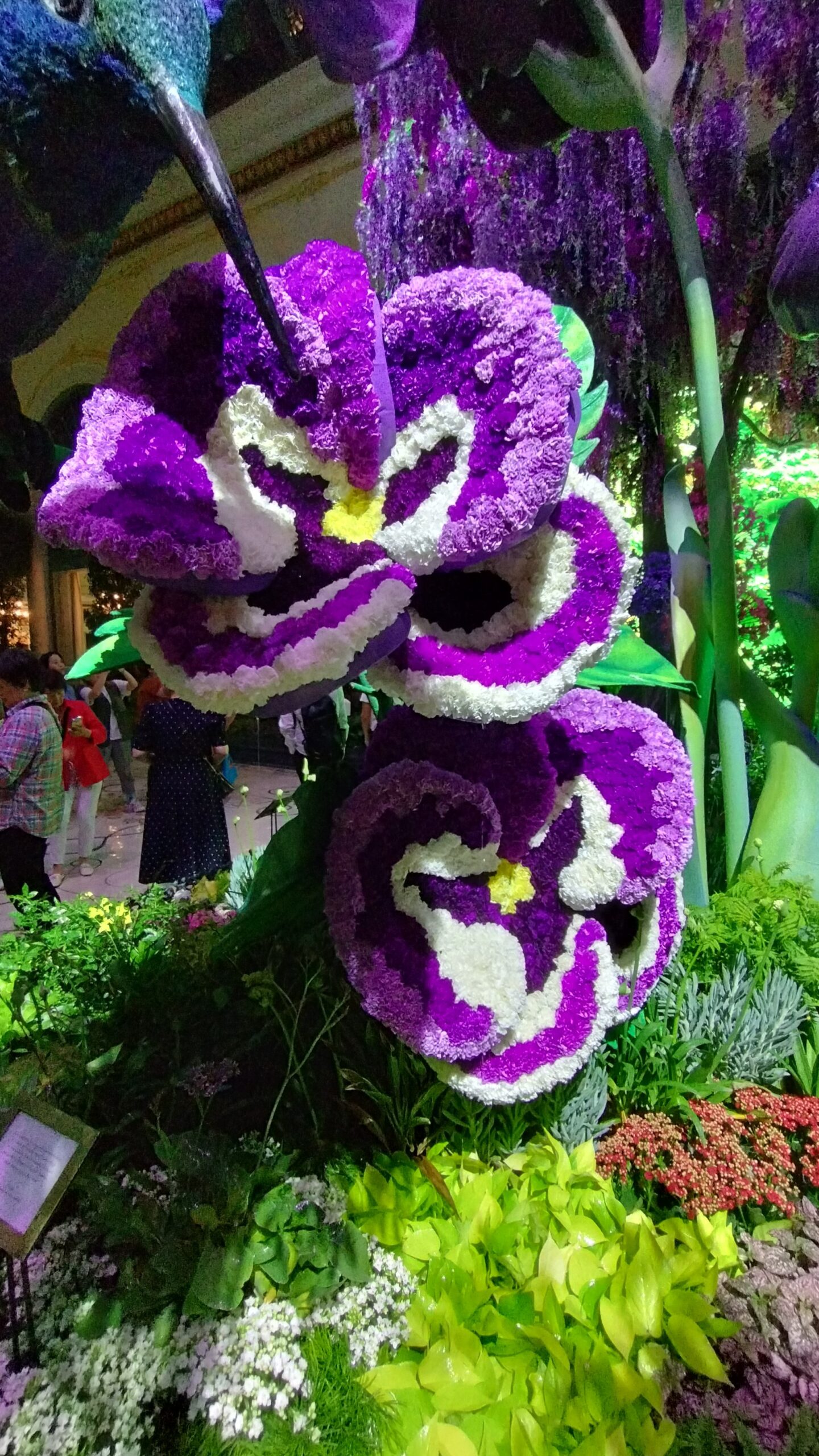
All of these sculptures, amazingly, are made out of flowers.
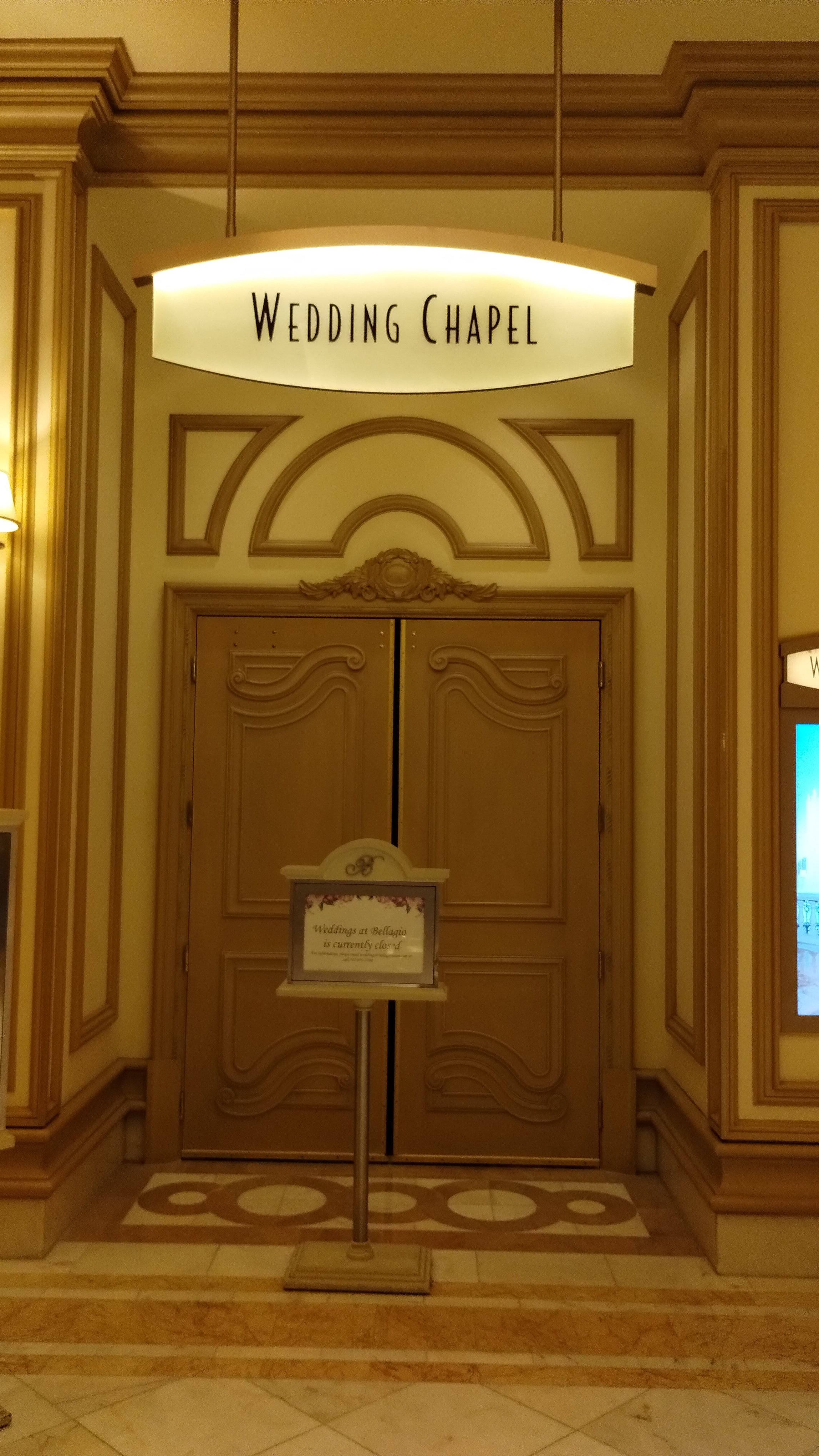
Didn’t get to see a Vegas Wedding 🙁
I’ll admit that I did do a little bit of gambling, but rather than play someplace classy like the Bellagio, I followed my Memphis instincts and went here:
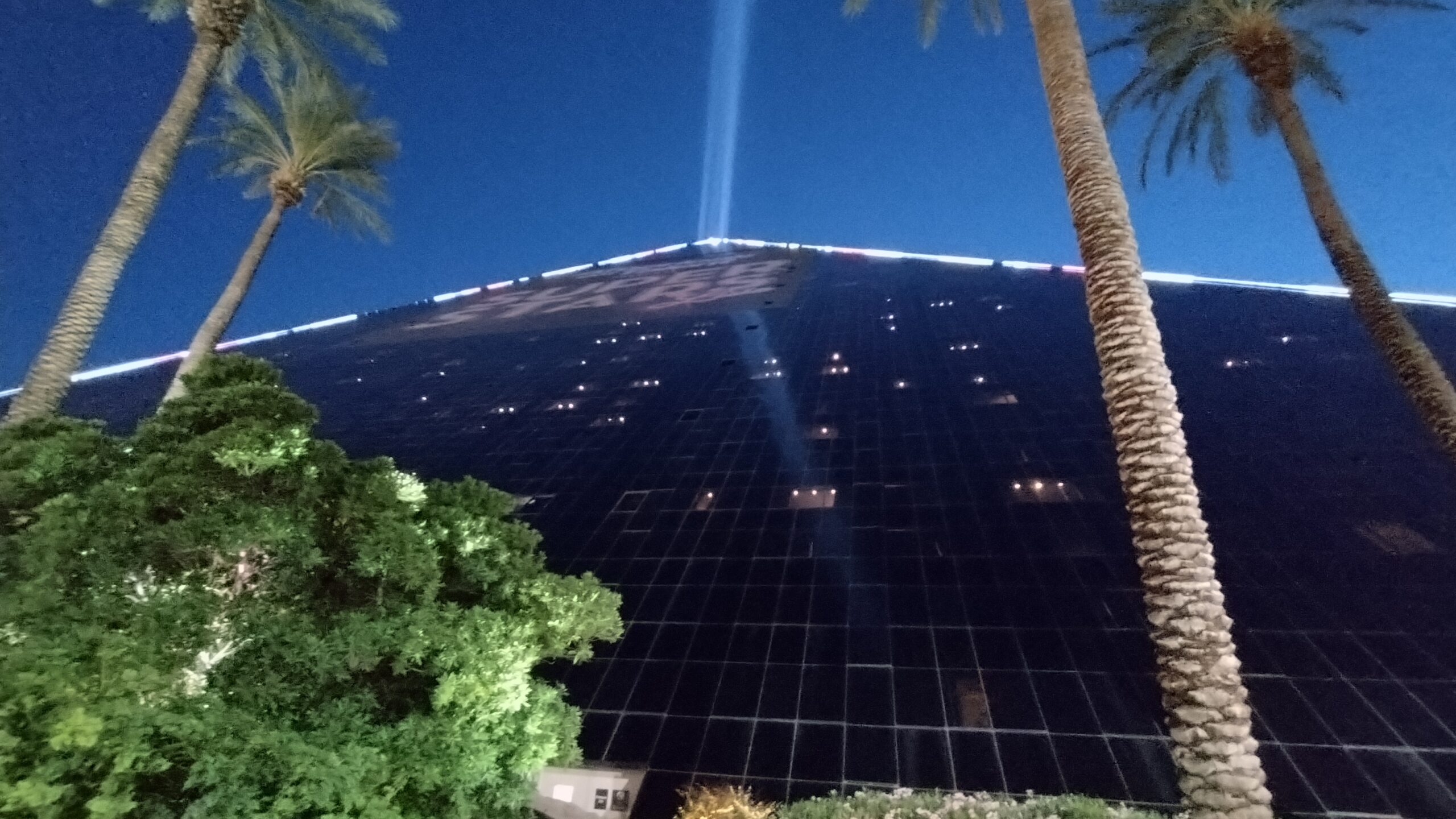
Why does capitalism keep doing this?
I’m not gonna lie, this was not fun. I only played through about $20 and paid for some drinks with winnings along the way, but altogether the whole vibe in the casino was just kinda… sad. And this was in the middle of a three-day weekend, you would think it would be popping, but no dice :/

I had heard that people come around with free drinks if you gamble for a while. I spent a good bit of time at the penny slots and only ever got one drink, and as seen above, it was definitely not full-sized.
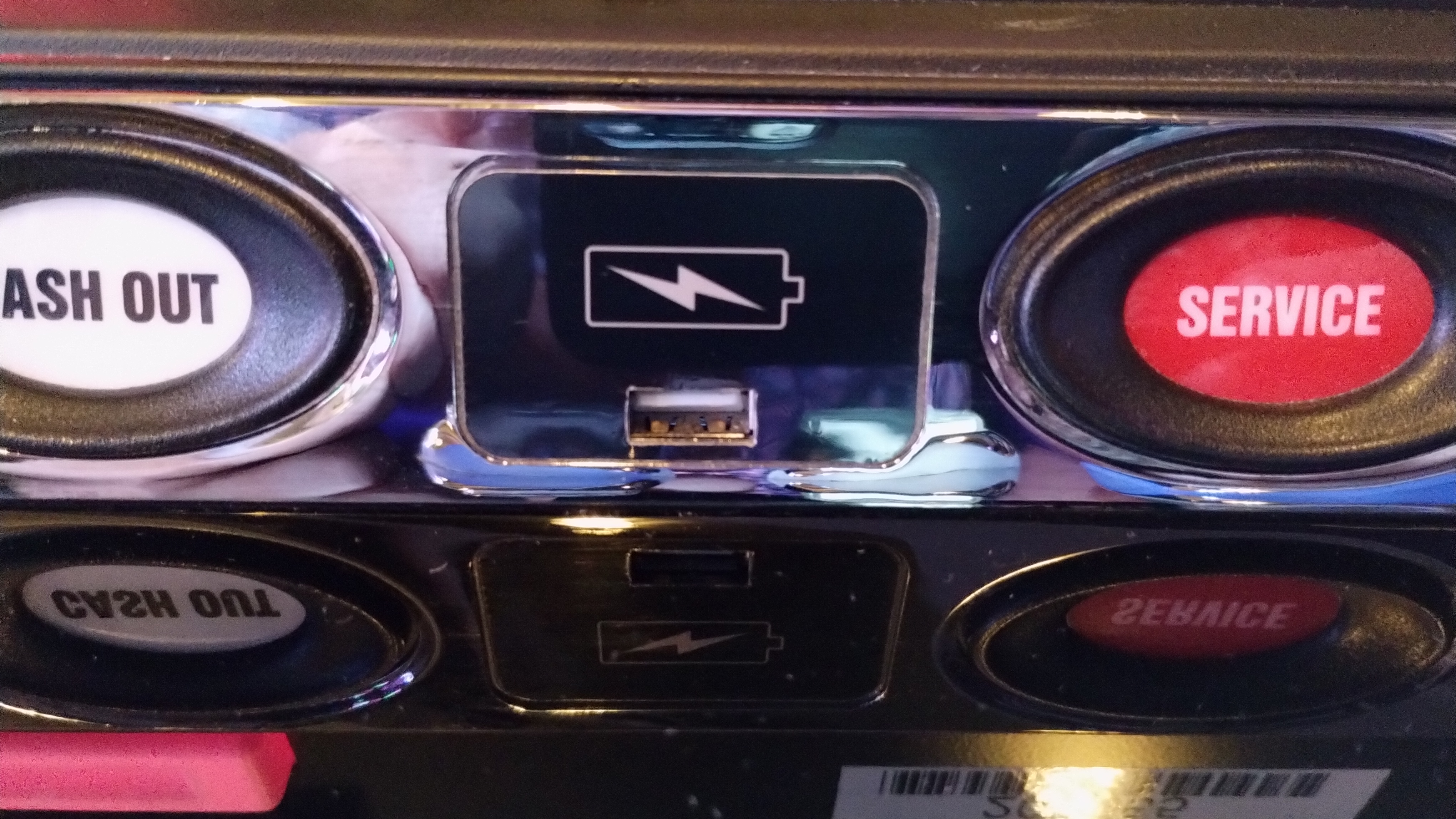
Of all the predatory practices I know casinos use, for whatever reason, seeing charging ports for your phone at all the slot machines really disturbed me the most.
Every Vegas gambling story I’ve ever heard goes “I won so much money, and then-“. I was determined not to add to the pile and left after playing through $20. Having money in Vegas, like many things in the desert, is quite odd and ephemeral.
As usual, it was time to keep on keepin’ on:

Yup! I’ve crossed into the last state of the cross-country portion of this trip, by way of Death Valley. Good God, what a brutal and unforgiving slice of the countryside this valley occupies:

The main thing I wanted to see in the area was Badwater basin, the lowest point in the US:
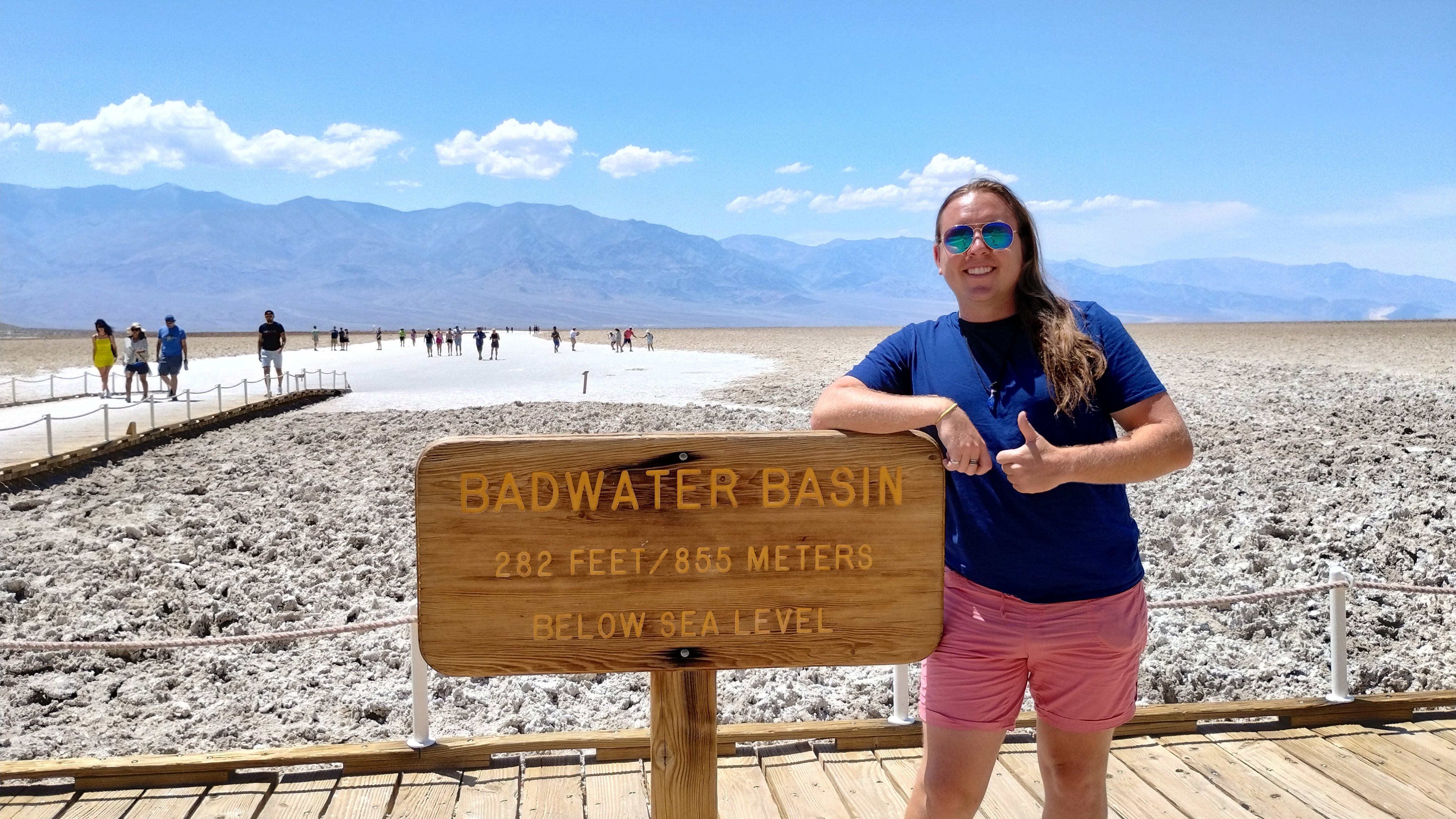
Now as the observant might observe, the sign indicating your elevation here is on a boardwalk slightly above the salt pan below. This necessitates that the actual lowest point is down on the flats, right? Well, about that:
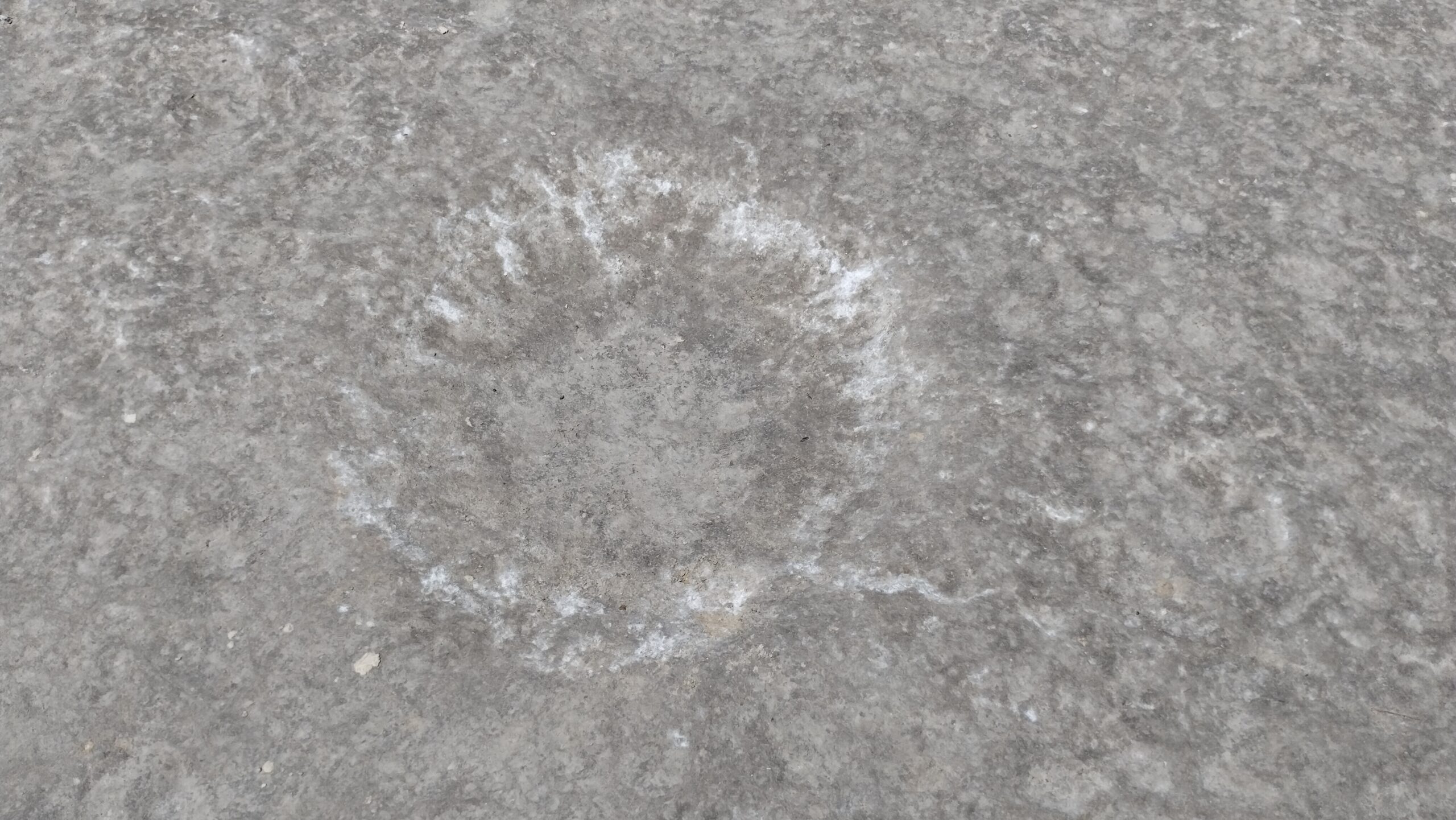
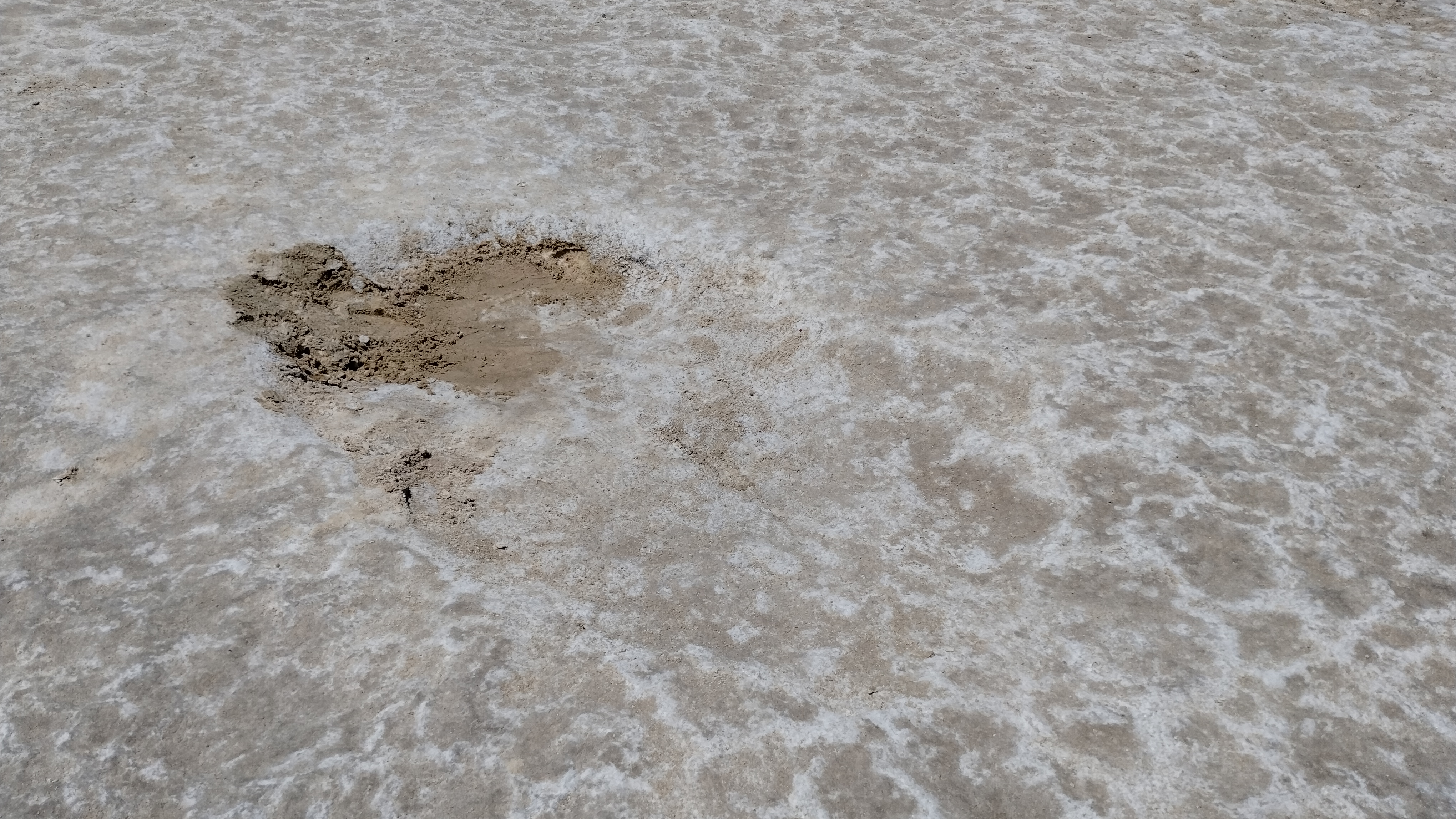
The salt pan itself is pockmarked with these little, miniature craters everywhere, and I do not know what caused them. All I knew is that surely one of them has to be the lowest point in the US! So:
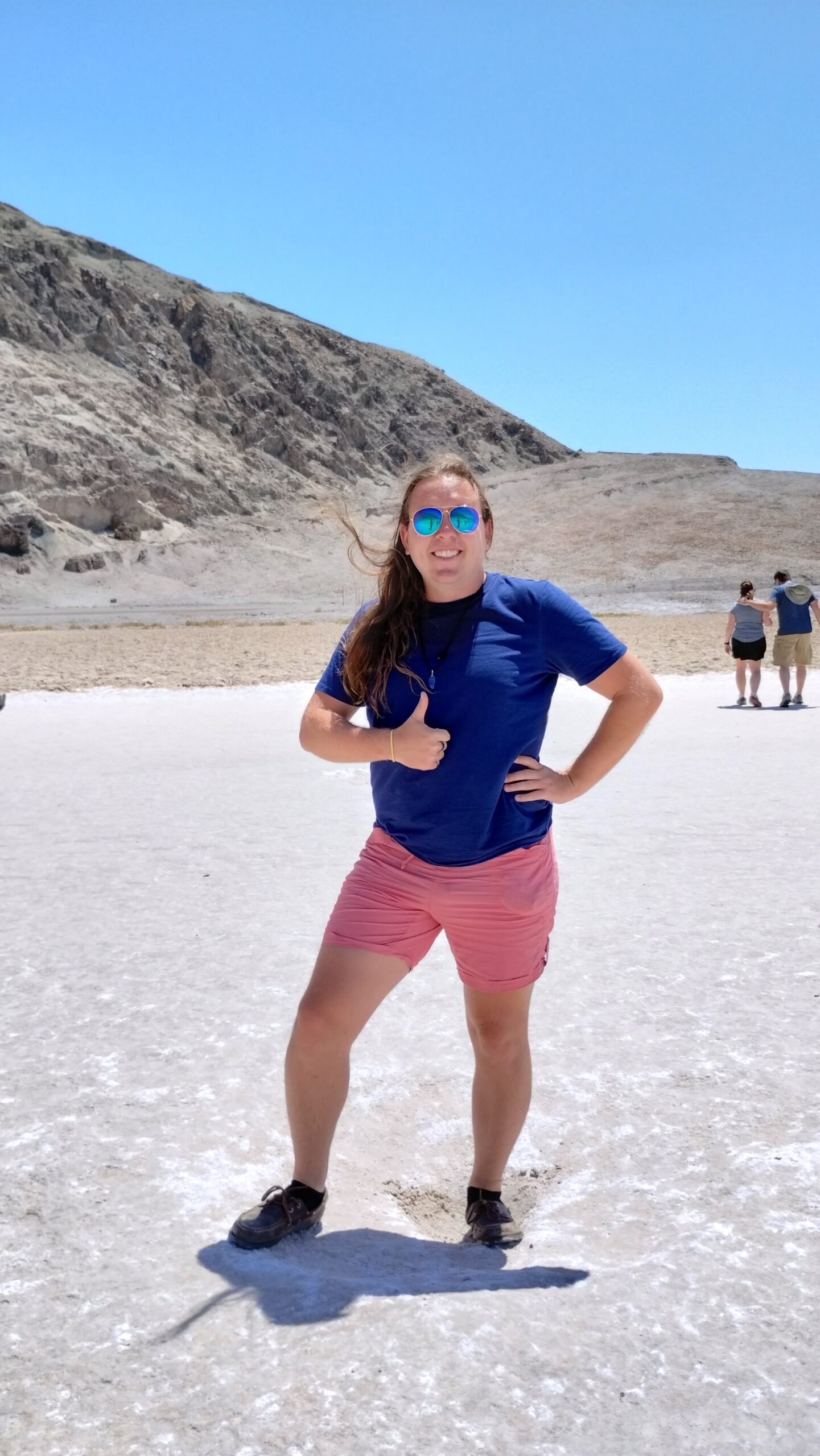
Yeah, I for sure hopscotched around the playa making sure I hit every little pothole, guaranteeing me that I stood on the lowest point somewhere 🙂
Despite being the end of May and still ostensibly spring, temperatures in the valley were at 105 F while I was there. This fell radically to 65 F or 70 F atop the mountain ridges as you made your way west, before returning to the triple digits in the valley floor again. The record temperature for the entire us, 135 F, was recorded at Furnace Creek, Death Valley, back in the day.
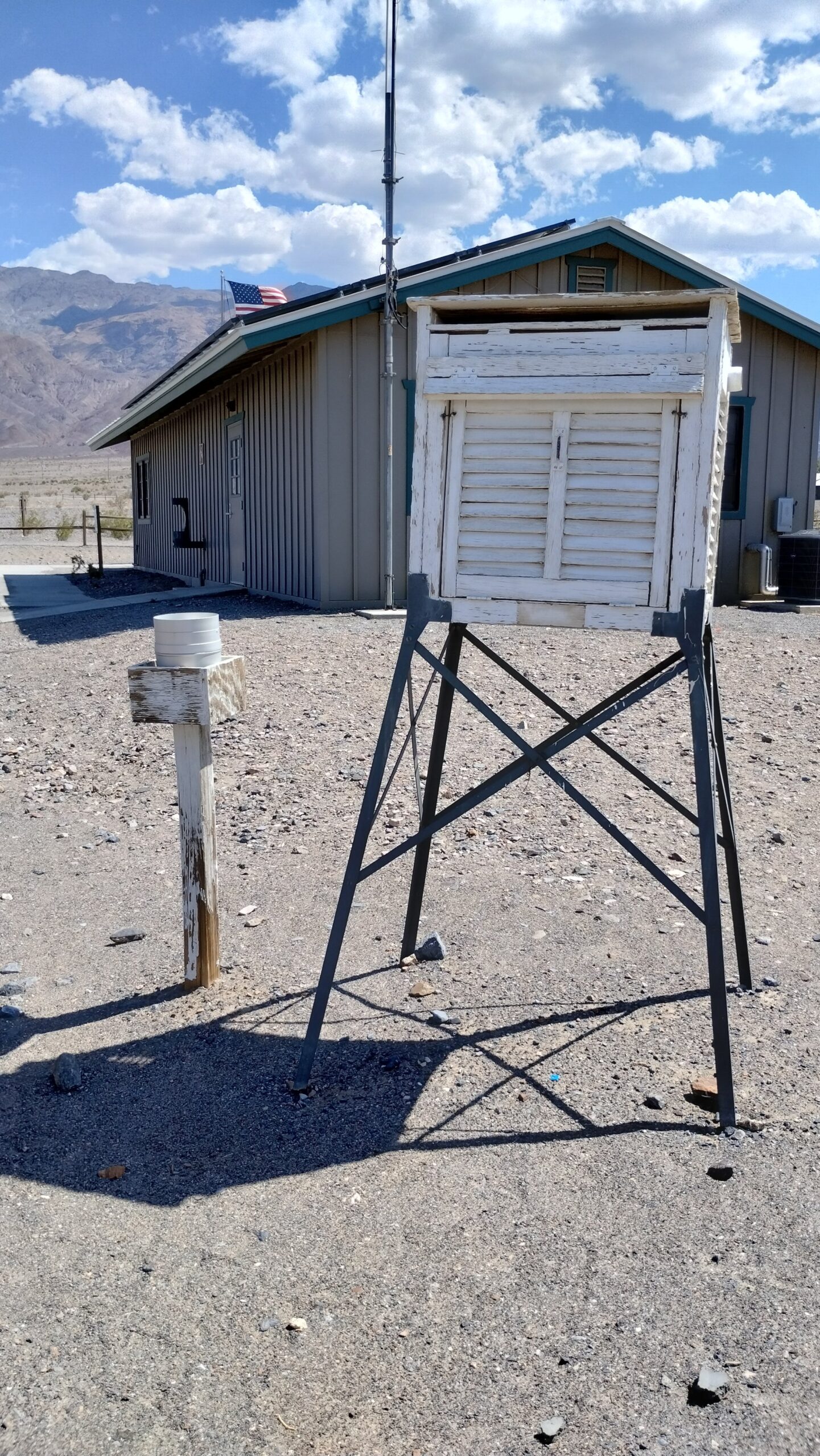
And here’s your culprit behind these misesbly high temperatures!
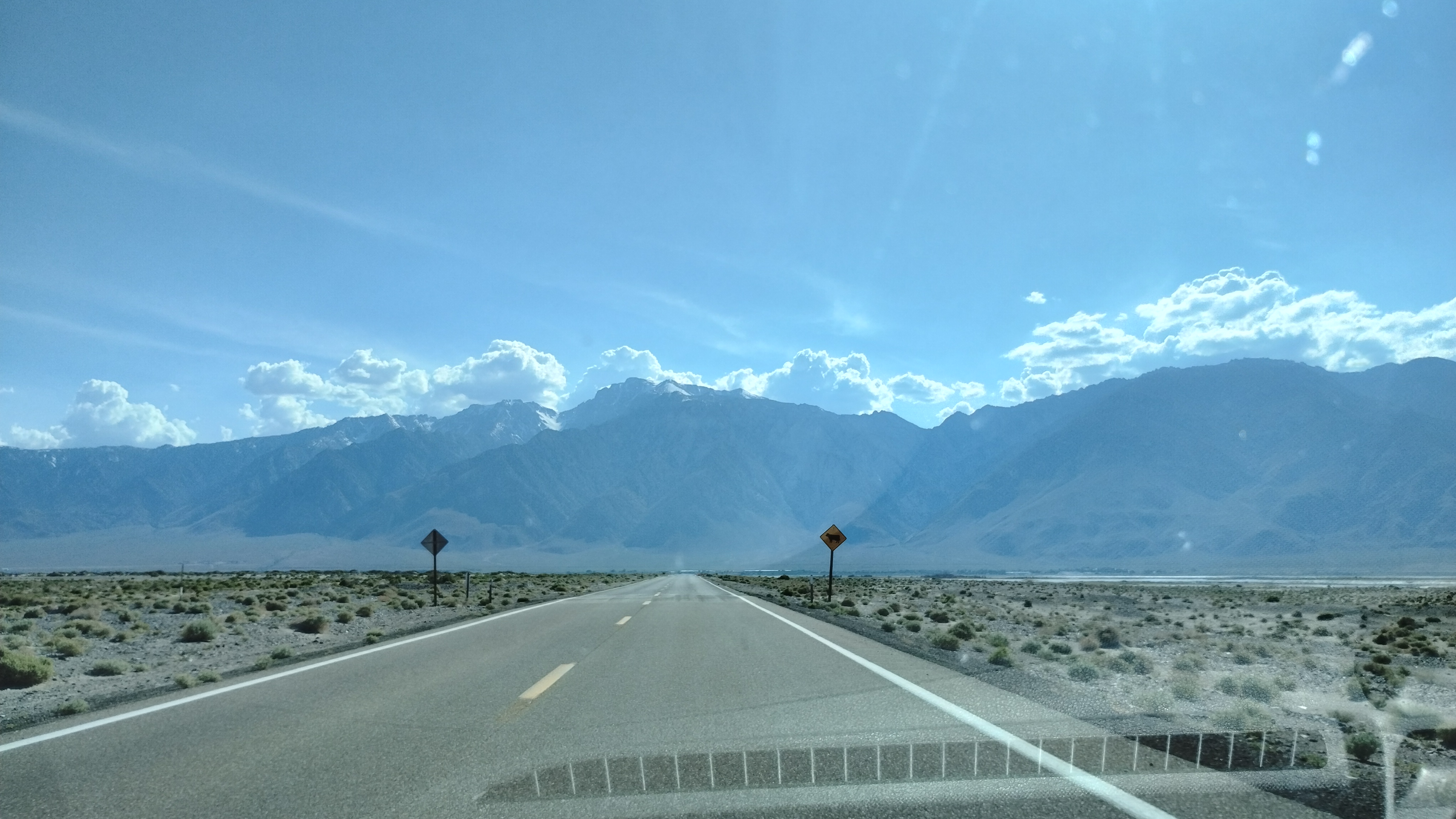
But eventually, you get to the part of California that actually looks like California: the east side of the Sierras.
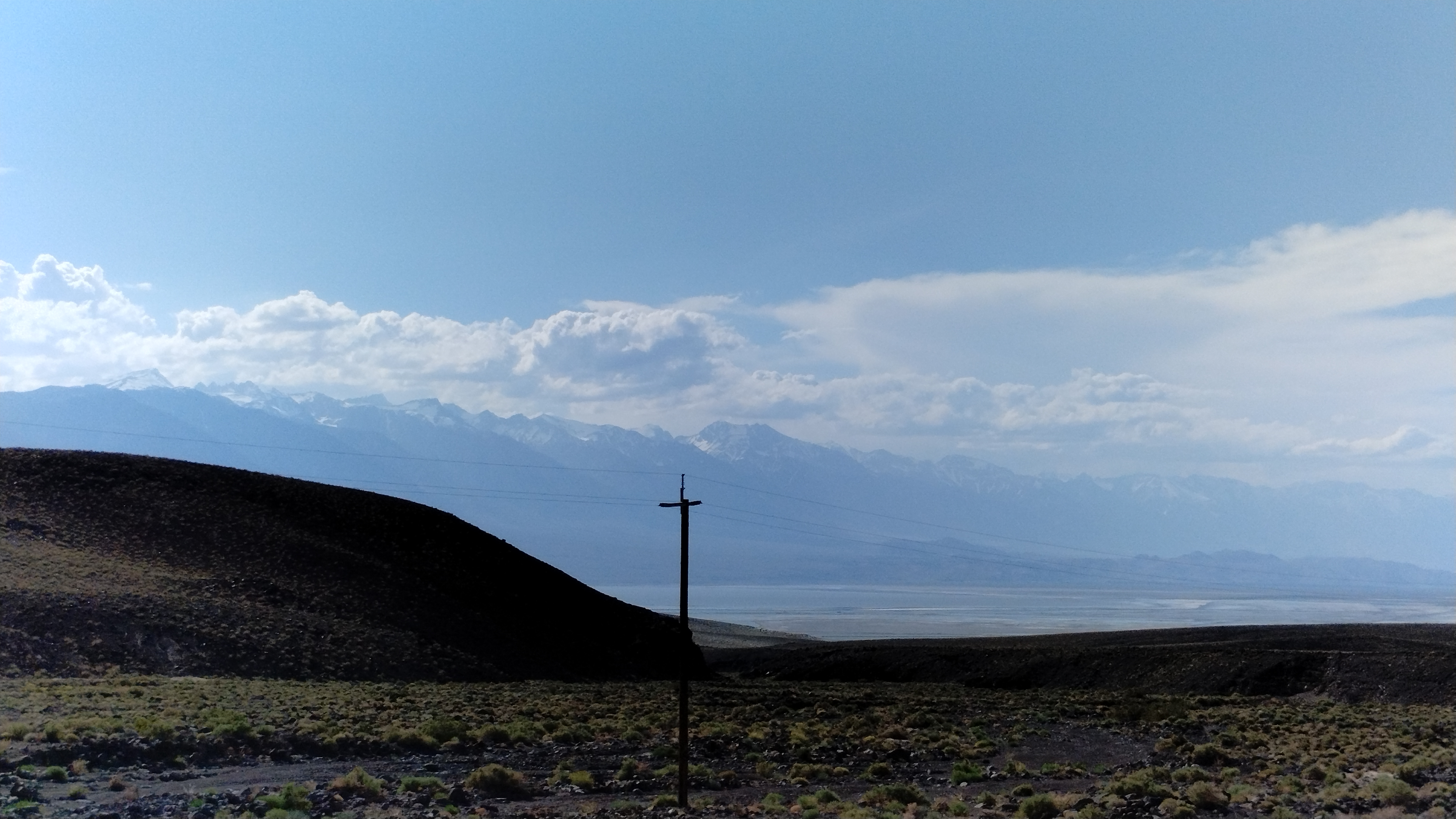
The mountain in the middle, with its peak obscured by clouds, is Mount Whitney, the highest point in the lower 48.
The Sierras are very beautiful, especially towards late afternoon, when these pictures were taken. They are also remarkabl- hey wait a minute, is that a lake?
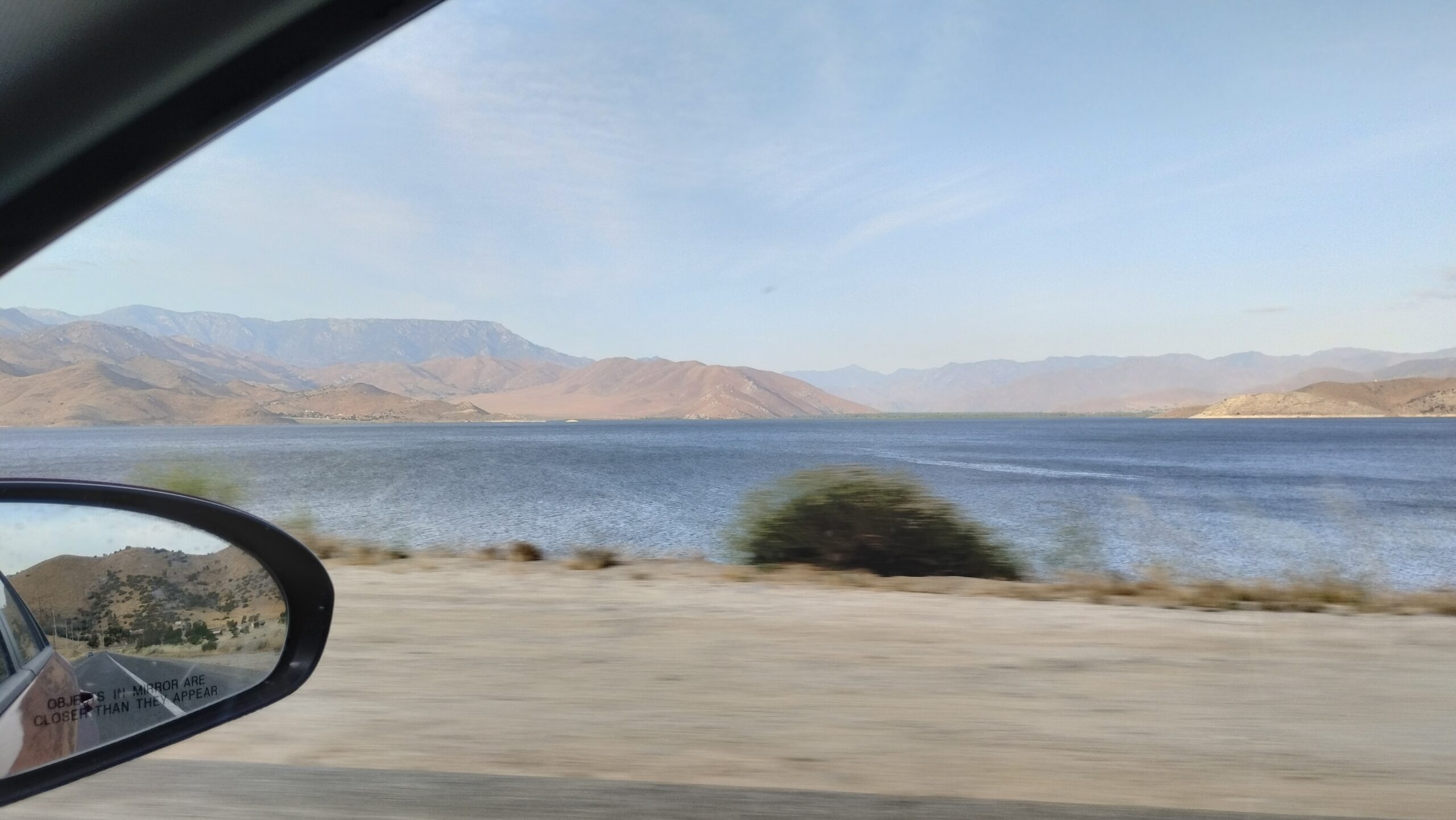
It is a lake! One I absolutely did not expect to see! The lake above is Owens Lake, a large, endoheric lake which is fed by snowmelt from the eastern side of the Sierras. But here is why I didn’t expect to see it: Owens Lake hasn’t existed for decades!
As the city of Los Angeles was growing in the early 1900s, it rapidly outstripped the water provided by its surroundings, and so had to bring water in from elsewhere. The “solution” was to steal the water of the Owens River Valley, which otherwise would have evaporated out of Owens Lake, and pipe it hundreds of miles to LA (the farmers with senior water rights in the area were not told about this project because they’d only do unhelpful things like disagree and protrect their rights as landowners. No water was left over for them either: the entire water supply of the Owens River was drained off to LA, and Owens Lake disappeared as a result. The only reason it can be seen now is that, for the first time in decades, snowmelt from the Sierras is so plentiful that the intakes can’t take all the water away!
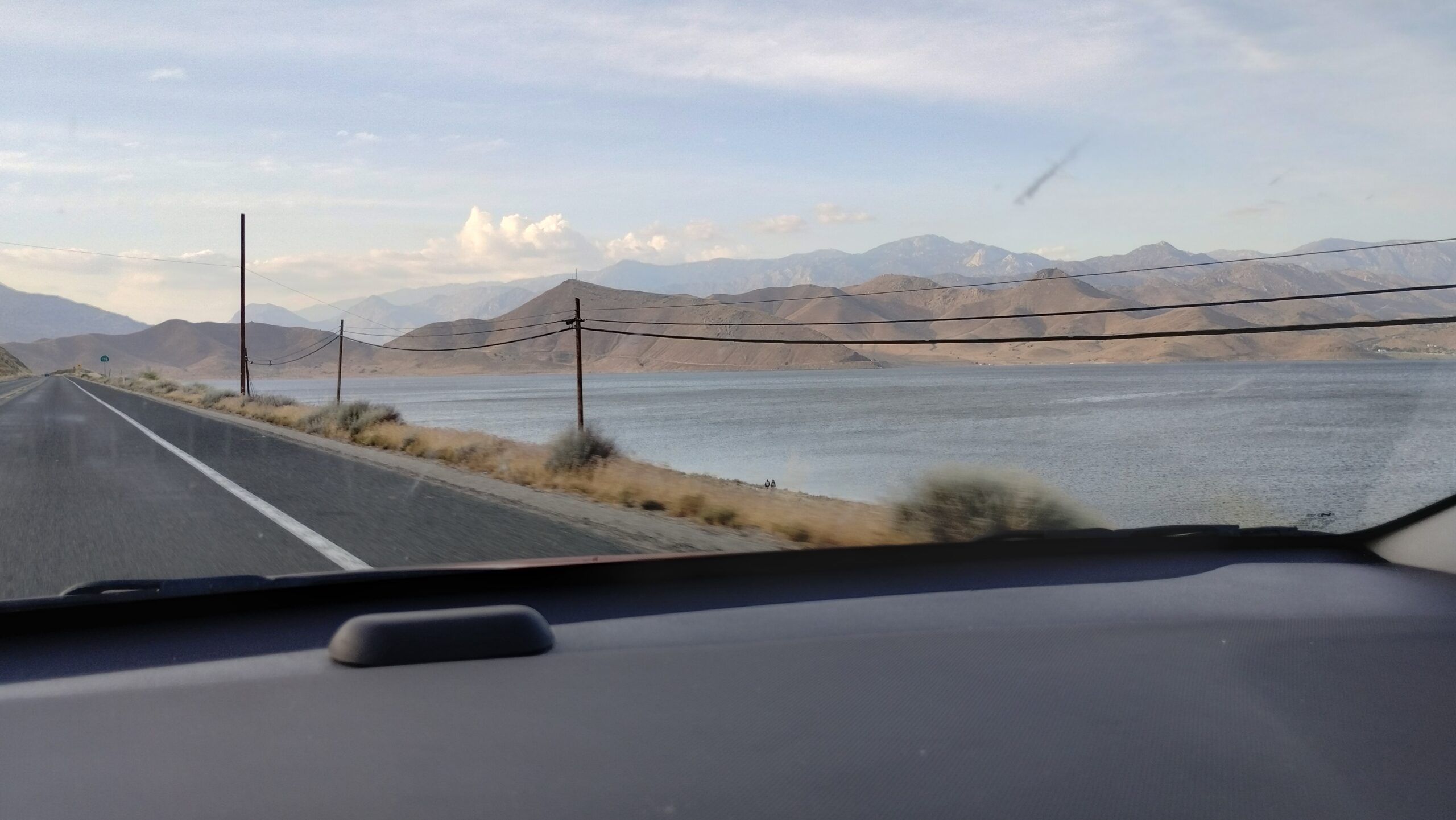
A desert lake not seen in decades finally returning, but for how long? What a beautiful, odd, and ephemeral thing to see in the desert!
Sorry this post took so long to come out; I have since hit the coast and had lots of exciting adventures there, but I have some extra free time the next few days and will get this travel blog back on track. Until then, back to the road it is!
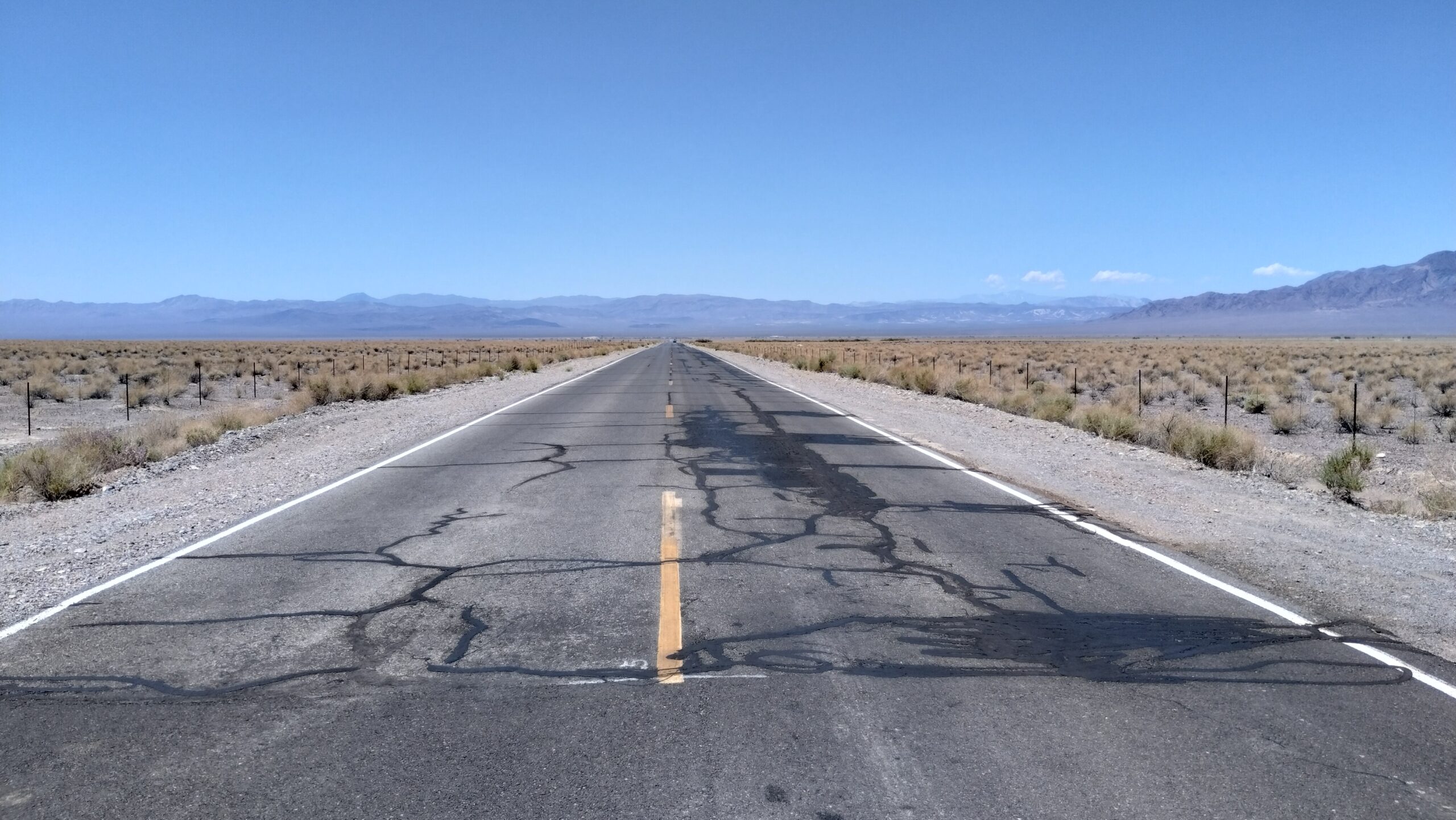
Stay well everyone,
Evan 💙